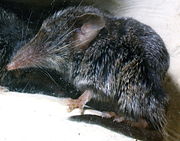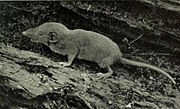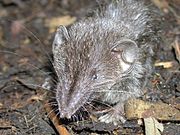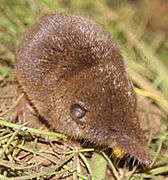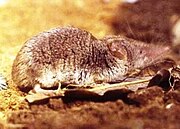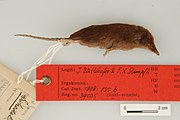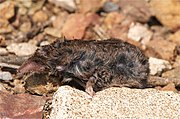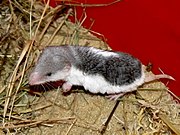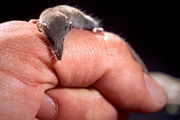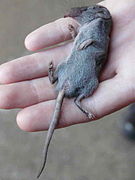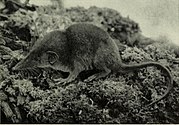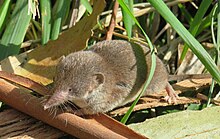
Crocidurinae is a subfamily of small mammals in the shrew family Soricidae, which in turn is part of the order Eulipotyphla. A member of this family is called a crocidurine, or a white-toothed shrew. Crocidurinae is one of three subfamilies in Soricidae, along with the African shrews of Myosoricinae and the red-toothed shrews of Soricinae. They are found in Africa, Europe, and Asia, primarily in forests, savannas, shrublands, and grasslands, though some species can also be found in wetlands, rocky areas, or coastal areas. They range in size from the Etruscan shrew, one of the smallest mammal species at 3 cm (1 in) plus a 2 cm (1 in) tail, to the hero shrew and Thor's hero shrew, at 15 cm (6 in) plus a 10 cm (4 in) tail. Crocidurines primarily eat invertebrates, small mammals, frogs, toads, and lizards. Almost no crocidurines have population estimates, but 21 species are categorized as endangered species, while the Andaman shrew, Christmas Island shrew, Harenna shrew, Jenkins's shrew, Nicobar shrew, and Wimmer's shrew are categorized as critically endangered.
The 235 extant species of Crocidurinae are divided into nine genera; 192 of them are in Crocidura, the most species of any mammal genus. A few extinct prehistoric Crocidurinae species have been discovered, though due to ongoing research and discoveries the exact number and categorization is not fixed.
Conventions
| Conservation status | |
|---|---|
| EX | Extinct (0 species) |
| EW | Extinct in the wild (0 species) |
| CR | Critically Endangered (6 species) |
| EN | Endangered (21 species) |
| VU | Vulnerable (12 species) |
| NT | Near threatened (7 species) |
| LC | Least concern (128 species) |
| Other categories | |
| DD | Data deficient (60 species) |
| NE | Not evaluated (0 species) |
Conservation status codes listed follow the International Union for Conservation of Nature (IUCN) Red List of Threatened Species. Range maps are provided wherever possible; if a range map is not available, a description of the crocidurine's range is provided. Ranges are based on the IUCN Red List for that species unless otherwise noted.
Classification
The subfamily Crocidurinae consists of nine genera: Crocidura, containing 192 species; Diplomesodon and Feroculus with a single species each; Paracrocidura, with three species; Ruwenzorisorex, with one species; Scutisorex, containing two species; Solisorex, with one species, Suncus, containing nineteen species; and Sylvisorex, containing fifteen species.
Subfamily Crocidurinae
- Genus Crocidura (white-toothed shrews): 191 species
- Genus Diplomesodon (piebald shrew): one species
- Genus Feroculus (Kelaart's long-clawed shrew): one species
- Genus Paracrocidura (large-headed shrews): three species
- Genus Ruwenzorisorex (Ruwenzori shrew): one species
- Genus Scutisorex (hero shrews): two species
- Genus Solisorex (Pearson's long-clawed shrew): one species
- Genus Suncus (musk shrews and pygmy shrews): nineteen species
- Genus Sylvisorex (forest shrews): fifteen species
Crocidurines
The following classification is based on the taxonomy described by the reference work Mammal Species of the World (2005), with augmentation by generally accepted proposals made since using molecular phylogenetic analysis, as supported by both the IUCN and the American Society of Mammalogists.
| Common name | Scientific name and subspecies | Range | Size and ecology | IUCN status and estimated population |
|---|---|---|---|---|
| African black shrew
|
C. nigrofusca Matschie, 1895 |
Central and eastern Africa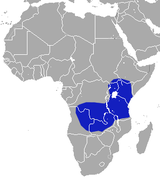
|
Size: 4–18 cm (2–7 in) long, plus 4–11 cm (2–4 in) tail Habitat: Forest Diet: Invertebrates, small mammals, frogs, toads, and lizards |
LC
|
| African dusky shrew
|
C. caliginea Hollister, 1916 |
Central Africa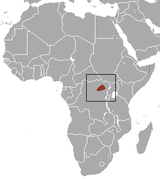
|
Size: 6–8 cm (2–3 in) long, plus 4–6 cm (2 in) tail Habitat: Forest Diet: Invertebrates, small mammals, frogs, toads, and lizards |
LC
|
| African giant shrew | C. olivieri (Lesson, 1827) 20 subspecies
|
Sub-Saharan Africa
|
Size: 11–14 cm (4–6 in) long, plus 8–10 cm (3–4 in) tail Habitat: Forest, savanna, and shrubland Diet: Invertebrates |
LC
|
| Andaman shrew
|
C. andamanensis Miller, 1902 |
South Andaman Island in India
|
Size: 4–18 cm (2–7 in) long, plus 4–11 cm (2–4 in) tail Habitat: Forest Diet: Invertebrates, small mammals, frogs, toads, and lizards |
CR
|
| Andaman spiny shrew
|
C. hispida Thomas, 1913 |
South Andaman Island in India
|
Size: 4–18 cm (2–7 in) long, plus 4–11 cm (2–4 in) tail Habitat: Forest Diet: Invertebrates, small mammals, frogs, toads, and lizards |
VU
|
| Annamite shrew
|
C. annamitensis Jenkins, Lunde, & Moncrieff, 2009 |
Vietnam | Size: 4–18 cm (2–7 in) long, plus 4–11 cm (2–4 in) tail Habitat: Forest Diet: Invertebrates, small mammals, frogs, toads, and lizards |
DD
|
| Ansell's shrew
|
C. ansellorum Hutterer & Dippenaar, 1987 |
South-central Africa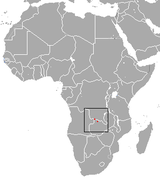
|
Size: 5–6 cm (2–2 in) long, plus 4–6 cm (2 in) tail Habitat: Forest Diet: Invertebrates, small mammals, frogs, toads, and lizards |
EN
|
| Arabian shrew
|
C. arabica Hutterer, 1988 |
Oman and Yemen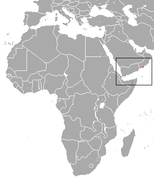
|
Size: 4–18 cm (2–7 in) long, plus 4–11 cm (2–4 in) tail Habitat: Unknown Diet: Invertebrates, small mammals, frogs, toads, and lizards |
LC
|
| Armenian shrew
|
C. armenica Gureev, 1963 |
Armenia
|
Size: 4–18 cm (2–7 in) long, plus 4–11 cm (2–4 in) tail Habitat: Rocky areas Diet: Invertebrates, small mammals, frogs, toads, and lizards |
DD
|
| Asian gray shrew
|
C. attenuata H. Milne-Edwards, 1872 |
Eastern and southeastern Asia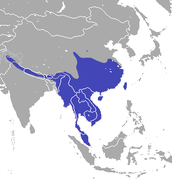
|
Size: 4–18 cm (2–7 in) long, plus 4–11 cm (2–4 in) tail Habitat: Forest, shrubland, and grassland Diet: Invertebrates, small mammals, frogs, toads, and lizards |
LC
|
| Asian lesser white-toothed shrew | C. shantungensis Miller, 1901 Two subspecies
|
Eastern Asia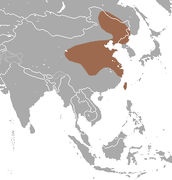
|
Size: 4–18 cm (2–7 in) long, plus 4–11 cm (2–4 in) tail Habitat: Shrubland and grassland Diet: Invertebrates, small mammals, frogs, toads, and lizards |
LC
|
| Bailey's shrew
|
C. baileyi Osgood, 1936 |
Ethiopia
|
Size: 4–18 cm (2–7 in) long, plus 4–11 cm (2–4 in) tail Habitat: Grassland Diet: Invertebrates, small mammals, frogs, toads, and lizards |
LC
|
| Bale shrew
|
C. bottegoides Hutterer & Yalden, 1990 |
Ethiopia
|
Size: 4–6 cm (2 in) long, plus 4–5 cm (2 in) tail Habitat: Grassland and forest Diet: Invertebrates, small mammals, frogs, toads, and lizards |
EN
|
| Banka shrew
|
C. vosmaeri Jentink, 1888 |
Bangka Island in Indonesia | Size: 4–18 cm (2–7 in) long, plus 4–11 cm (2–4 in) tail Habitat: Forest Diet: Invertebrates, small mammals, frogs, toads, and lizards |
DD
|
| Batak shrew
|
C. batakorum Hutterer, 2007 |
Philippines
|
Size: 4–18 cm (2–7 in) long, plus 4–11 cm (2–4 in) tail Habitat: Forest Diet: Invertebrates, small mammals, frogs, toads, and lizards |
DD
|
| Bates's shrew
|
C. batesi (Dollman, 1915) |
Western Africa
|
Size: 4–18 cm (2–7 in) long, plus 4–11 cm (2–4 in) tail Habitat: Forest Diet: Invertebrates, small mammals, frogs, toads, and lizards |
LC
|
| Beccari's shrew
|
C. beccarii Dobson, 1886 |
Sumatra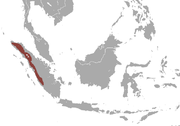
|
Size: 4–18 cm (2–7 in) long, plus 4–11 cm (2–4 in) tail Habitat: Forest Diet: Invertebrates, small mammals, frogs, toads, and lizards |
LC
|
| Beletta shrew
|
C. yaldeni Lavrenchenko, Voyta, & Hutterer, 2016 |
Ethiopia | Size: 4–18 cm (2–7 in) long, plus 4–11 cm (2–4 in) tail Habitat: Forest Diet: Invertebrates, small mammals, frogs, toads, and lizards |
DD
|
| Bicolored musk shrew
|
C. fuscomurina (Heuglin, 1865) |
Sub-Saharan Africa
|
Size: 4–8 cm (2–3 in) long, plus 2–5 cm (1–2 in) tail Habitat: Savanna, grassland, and desert Diet: Invertebrates, small mammals, frogs, toads, and lizards |
LC
|
| Bicolored shrew | C. leucodon (Hermann, 1780) |
Europe and western Asia
|
Size: 6–9 cm (2–4 in) long, plus 2–5 cm (1–2 in) tail Habitat: Shrubland and grassland Diet: Small mammals, frogs, toads, lizards, and invertebrates |
LC
|
| Black-footed shrew | C. nigripes Miller & Hollister, 1921 Two subspecies
|
Sulawesi island in Indonesia
|
Size: 4–18 cm (2–7 in) long, plus 4–11 cm (2–4 in) tail Habitat: Forest Diet: Invertebrates, small mammals, frogs, toads, and lizards |
LC
|
| Blackish white-toothed shrew
|
C. nigricans Bocage, 1889 |
Angola
|
Size: 6–9 cm (2–4 in) long, plus 4–7 cm (2–3 in) tail Habitat: Unknown Diet: Invertebrates, small mammals, frogs, toads, and lizards |
LC
|
| Bornean shrew
|
C. foetida Peters, 1870 Three subspecies
|
Borneo
|
Size: 4–18 cm (2–7 in) long, plus 4–11 cm (2–4 in) tail Habitat: Forest Diet: Invertebrates, small mammals, frogs, toads, and lizards |
LC
|
| Bottego's shrew
|
C. bottegi Thomas, 1898 |
Ethiopia
|
Size: 4–6 cm (2 in) long, plus 2–3 cm (1 in) tail Habitat: Unknown Diet: Invertebrates, small mammals, frogs, toads, and lizards |
DD
|
| Buettikofer's shrew
|
C. buettikoferi Jentink, 1888 |
West-central Africa
|
Size: 7–10 cm (3–4 in) long, plus 5–7 cm (2–3 in) tail Habitat: Forest Diet: Invertebrates, small mammals, frogs, toads, and lizards |
LC
|
| Butiaba naked-tailed shrew
|
C. littoralis Heller, 1910 |
Central Africa
|
Size: 8–10 cm (3–4 in) long, plus 6–8 cm (2–3 in) tail Habitat: Forest Diet: Invertebrates, small mammals, frogs, toads, and lizards |
LC
|
| Cameroonian shrew
|
C. picea Sanderson, 1940 |
West-central Africa
|
Size: 4–18 cm (2–7 in) long, plus 4–11 cm (2–4 in) tail Habitat: Forest and grassland Diet: Invertebrates, small mammals, frogs, toads, and lizards |
EN
|
| Canarian shrew | C. canariensis Hutterer, López-Jurado, & Vogel, 1987 |
Canary Islands
|
Size: 4–18 cm (2–7 in) long, plus 4–11 cm (2–4 in) tail Habitat: Coastal marine, desert, and shrubland Diet: Snails and insects |
EN
|
| Caspian shrew
|
C. caspica Thomas, 1907 |
Iran and Azerbaijan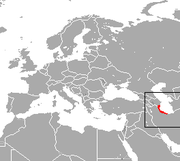
|
Size: 4–18 cm (2–7 in) long, plus 4–11 cm (2–4 in) tail Habitat: Unknown Diet: Invertebrates, small mammals, frogs, toads, and lizards |
DD
|
| Chinese white-toothed shrew
|
C. rapax Allen, 1923 Four subspecies
|
Eastern Asia | Size: 4–18 cm (2–7 in) long, plus 4–11 cm (2–4 in) tail Habitat: Unknown Diet: Invertebrates, small mammals, frogs, toads, and lizards |
DD
|
| Christmas Island shrew
|
C. trichura Dobson, 1889 |
Christmas Island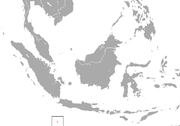
|
Size: 4–18 cm (2–7 in) long, plus 4–11 cm (2–4 in) tail Habitat: Forest Diet: Invertebrates, small mammals, frogs, toads, and lizards |
CR
|
| Cinderella shrew
|
C. cinderella Thomas, 1911 |
Western Africa
|
Size: 5–7 cm (2–3 in) long, plus 4–5 cm (2–2 in) tail Habitat: Savanna Diet: Invertebrates, small mammals, frogs, toads, and lizards |
LC
|
| Congo white-toothed shrew
|
C. congobelgica Hollister, 1916 |
Central Africa
|
Size: 4–18 cm (2–7 in) long, plus 4–11 cm (2–4 in) tail Habitat: Forest Diet: Invertebrates, small mammals, frogs, toads, and lizards |
LC
|
| Cranbrook's white-toothed shrew
|
C. cranbrooki Jenkins, Lunde, & Moncrieff, 2009 |
Northern Myanmar | Size: 4–18 cm (2–7 in) long, plus 4–11 cm (2–4 in) tail Habitat: Forest Diet: Invertebrates, small mammals, frogs, toads, and lizards |
DD
|
| Cretan shrew
|
C. zimmermanni Wettstein, 1953 |
Island of Crete in Greece
|
Size: 4–18 cm (2–7 in) long, plus 4–11 cm (2–4 in) tail Habitat: Unknown and rocky areas Diet: Invertebrates, small mammals, frogs, toads, and lizards |
EN
|
| Crosse's shrew
|
C. crossei Thomas, 1895 |
Western Africa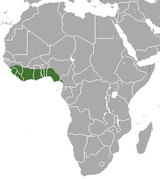
|
Size: 6–7 cm (2–3 in) long, plus 4–6 cm (2 in) tail Habitat: Forest Diet: Invertebrates, small mammals, frogs, toads, and lizards |
LC
|
| Cyrenaica shrew
|
C. aleksandrisi Vesmanis, 1977 |
Northern Libya
|
Size: 5–7 cm (2–3 in) long, plus 3–5 cm (1–2 in) tail Habitat: Shrubland Diet: Invertebrates, small mammals, frogs, toads, and lizards |
LC
|
| Dent's shrew | C. denti Dollman, 1915 |
Western and central Africa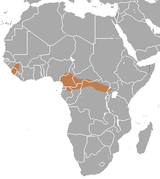
|
Size: About 6 cm (2 in) long, plus 5 cm (2 in) tail Habitat: Forest and savanna Diet: Invertebrates, small mammals, frogs, toads, and lizards |
LC
|
| Desert musk shrew
|
C. smithii Thomas, 1895 Two subspecies
|
Western and Eastern Africa
|
Size: 6–9 cm (2–4 in) long, plus 3–6 cm (1–2 in) tail Habitat: Savanna Diet: Invertebrates, small mammals, frogs, toads, and lizards |
LC
|
| Desperate shrew
|
C. desperata Hutterer, Jenkins, & Verheyen, 1991 |
Tanzania
|
Size: 8–11 cm (3–4 in) long, plus about 7 cm (3 in) tail Habitat: Forest Diet: Invertebrates, small mammals, frogs, toads, and lizards |
VU
|
| Dhofar shrew
|
C. dhofarensis (Hutterer, 1988) |
Yemen and Oman | Size: 4–18 cm (2–7 in) long, plus 4–11 cm (2–4 in) tail Habitat: Unknown Diet: Invertebrates, small mammals, frogs, toads, and lizards |
DD
|
| Doucet's musk shrew
|
C. douceti Heim de Balsac, 1958 |
Western Africa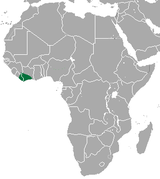
|
Size: 4–18 cm (2–7 in) long, plus 4–11 cm (2–4 in) tail Habitat: Forest Diet: Invertebrates, small mammals, frogs, toads, and lizards |
LC
|
| Dsinezumi shrew | C. dsinezumi (Temminck, 1842) |
Japan
|
Size: 4–18 cm (2–7 in) long, plus 4–11 cm (2–4 in) tail Habitat: Shrubland, grassland, and inland wetlands Diet: Invertebrates, small mammals, frogs, toads, and lizards |
LC
|
| East African highland shrew
|
C. allex Osgood, 1910 |
Kenya and Tanzania
|
Size: 5–7 cm (2–3 in) long, plus 4–6 cm (2 in) tail Habitat: Grassland and inland wetlands Diet: Invertebrates, small mammals, frogs, toads, and lizards |
LC
|
| Egyptian pygmy shrew
|
C. religiosa (Geoffroy, 1827) |
Northern Egypt
|
Size: 4–7 cm (2–3 in) long, plus 2–4 cm (1–2 in) tail Habitat: Diet: Invertebrates, small mammals, frogs, toads, and lizards |
DD
|
| Eisentraut's shrew
|
C. eisentrauti Heim de Balsac, 1957 |
Cameroon
|
Size: 4–18 cm (2–7 in) long, plus 4–11 cm (2–4 in) tail Habitat: Grassland and forest Diet: Invertebrates, small mammals, frogs, toads, and lizards |
VU
|
| Elgon shrew
|
C. elgonius Osgood, 1910 |
Kenya and Tanzania
|
Size: 4–18 cm (2–7 in) long, plus 4–11 cm (2–4 in) tail Habitat: Forest Diet: Invertebrates, small mammals, frogs, toads, and lizards |
LC
|
| Elongated shrew
|
C. elongata Miller & Hollister, 1921 |
Sulawesi island in Indonesia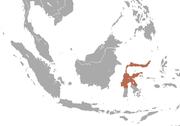
|
Size: 4–18 cm (2–7 in) long, plus 4–11 cm (2–4 in) tail Habitat: Forest and shrubland Diet: Invertebrates, small mammals, frogs, toads, and lizards |
LC
|
| Fingui white-toothed shrew
|
C. fingui Ceríaco et al., 2015 |
Príncipe in São Tomé and Príncipe | Size: 4–18 cm (2–7 in) long, plus 4–11 cm (2–4 in) tail Habitat: Forest Diet: Invertebrates, small mammals, frogs, toads, and lizards |
DD
|
| Fischer's shrew
|
C. fischeri Pagenstecher, 1885 |
Kenya and Tanzania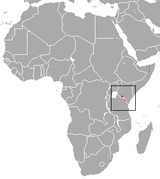
|
Size: 6–10 cm (2–4 in) long, plus 4–6 cm (2 in) tail Habitat: Savanna Diet: Invertebrates, small mammals, frogs, toads, and lizards |
DD
|
| Flat-headed shrew
|
C. planiceps Heller, 1910 |
West-central Africa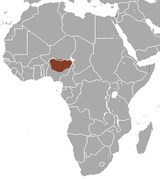
|
Size: 4–18 cm (2–7 in) long, plus 4–11 cm (2–4 in) tail Habitat: Inland wetlands Diet: Invertebrates, small mammals, frogs, toads, and lizards |
DD
|
| Flower's shrew
|
C. floweri Dollman, 1915 |
Northern Egypt
|
Size: 5–8 cm (2–3 in) long, plus 5–6 cm (2–2 in) tail Habitat: Artificial terrain Diet: Invertebrates, small mammals, frogs, toads, and lizards |
DD
|
| Fox's shrew
|
C. foxi Dollman, 1915 |
Western and central Africa
|
Size: 9–12 cm (4–5 in) long, plus 5–8 cm (2–3 in) tail Habitat: Savanna and forest Diet: Invertebrates, small mammals, frogs, toads, and lizards |
LC
|
| Fraser's musk shrew
|
C. poensis (Fraser, 1843) |
Western Africa
|
Size: 7–10 cm (3–4 in) long, plus 4–7 cm (2–3 in) tail Habitat: Shrubland and forest Diet: Arthropods and other invertebrates |
LC
|
| Gathorne's shrew
|
C. gathornei Jenkins, 2013 |
Himalayas in India | Size: 4–18 cm (2–7 in) long, plus 4–11 cm (2–4 in) tail Habitat: Shrubland and grassland Diet: Invertebrates, small mammals, frogs, toads, and lizards |
DD
|
| Glass's shrew
|
C. glassi Heim de Balsac, 1966 |
Ethiopia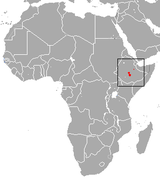
|
Size: 6–9 cm (2–4 in) long, plus 4–6 cm (2 in)tail Habitat: Shrubland, grassland, and inland wetlands Diet: Invertebrates, small mammals, frogs, toads, and lizards |
NT
|
| Gmelin's white-toothed shrew
|
C. gmelini Pallas, 1811 |
Central Asia
|
Size: 4–18 cm (2–7 in) long, plus 4–11 cm (2–4 in) tail Habitat: Shrubland and grassland Diet: Invertebrates, small mammals, frogs, toads, and lizards |
LC
|
| Goliath shrew
|
C. goliath Thomas, 1906 |
Central Africa
|
Size: 15–18 cm (6–7 in) long, plus 10–14 cm (4–6 in) tail Habitat: Forest Diet: Invertebrates, small mammals, frogs, toads, and lizards |
LC
|
| Gracile naked-tailed shrew
|
C. maurisca Thomas, 1904 |
Central Africa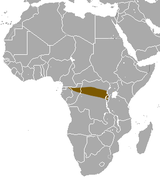
|
Size: 7–10 cm (3–4 in) long, plus 6–8 cm (2–3 in) tail Habitat: Inland wetlands and forest Diet: Invertebrates, small mammals, frogs, toads, and lizards |
LC
|
| Grasse's shrew
|
C. grassei Brosset, Dubost, & Heim de Balsac, 1965 |
West-central Africa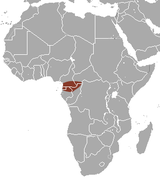
|
Size: 7–9 cm (3–4 in) long, plus 6–8 cm (2–3 in) tail Habitat: Forest Diet: Invertebrates, small mammals, frogs, toads, and lizards |
LC
|
| Greater Mindanao shrew
|
C. grandis Miller, 1911 |
Philippines
|
Size: 4–18 cm (2–7 in) long, plus 4–11 cm (2–4 in) tail Habitat: Forest Diet: Invertebrates, small mammals, frogs, toads, and lizards |
DD
|
| Greater red musk shrew | C. flavescens (Geoffroy, 1827) |
Southern Africa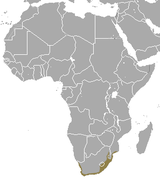
|
Size: 8–12 cm (3–5 in) long, plus 3–6 cm (1–2 in) tail Habitat: Savanna and grassland Diet: Invertebrates, small mammals, frogs, toads, and lizards |
LC
|
| Greater white-toothed shrew | C. russula (Hermann, 1780) |
Europe and northwestern Africa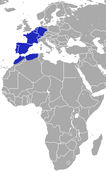
|
Size: 6–9 cm (2–4 in) long, plus 3–5 cm (1–2 in) tail Habitat: Shrubland Diet: Invertebrates, as well as small mammals and small lizards |
LC
|
| Greenwood's shrew
|
C. greenwoodi Heim de Balsac, 1966 |
Somalia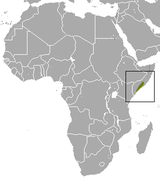
|
Size: 4–18 cm (2–7 in) long, plus 4–11 cm (2–4 in) tail Habitat: Forest, savanna, and shrubland Diet: Invertebrates, small mammals, frogs, toads, and lizards |
LC
|
| Guramba shrew
|
C. phaeura Osgood, 1936 |
Ethiopia
|
Size: 4–18 cm (2–7 in) long, plus 4–11 cm (2–4 in) tail Habitat: Forest Diet: Invertebrates, small mammals, frogs, toads, and lizards |
EN
|
| Guy's shrew
|
C. guy Jenkins, Lunde, & Moncrieff, 2009 |
Vietnam | Size: 4–18 cm (2–7 in) long, plus 4–11 cm (2–4 in) tail Habitat: Forest Diet: Invertebrates, small mammals, frogs, toads, and lizards |
DD
|
| Güldenstädt's shrew
|
C. gueldenstaedtii (Pallas, 1811) |
Europe and western Asia | Size: 4–18 cm (2–7 in) long, plus 4–11 cm (2–4 in) tail Habitat: Shrubland, grassland, inland wetlands, rocky areas, intertidal marine, and coastal marine Diet: Insects, as well as molluscs, amphipods, annelids, and small vertebrates |
LC
|
| Hainan Island shrew
|
C. wuchihensis Sung, 1966 |
Southern China and northern Vietnam | Size: 4–18 cm (2–7 in) long, plus 4–11 cm (2–4 in) tail Habitat: Forest Diet: Invertebrates, small mammals, frogs, toads, and lizards |
DD
|
| Harenna shrew
|
C. harenna Hutterer & Yalden, 1990 |
Ethiopia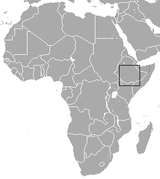
|
Size: 4–18 cm (2–7 in) long, plus 4–11 cm (2–4 in) tail Habitat: Forest Diet: Invertebrates, small mammals, frogs, toads, and lizards |
CR
|
| Heather shrew
|
C. erica Dollman, 1915 |
Angola
|
Size: About 10 cm (4 in) long, plus 5 cm (2 in) tail Habitat: Unknown Diet: Invertebrates, small mammals, frogs, toads, and lizards |
DD
|
| Hildegarde's shrew
|
C. hildegardeae Thomas, 1904 |
Central Africa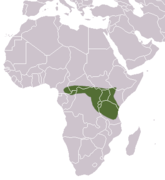
|
Size: 6–8 cm (2–3 in) long, plus 3–6 cm (1–2 in) tail Habitat: Forest Diet: Invertebrates, small mammals, frogs, toads, and lizards |
LC
|
| Hill's shrew
|
C. hilliana Jenkins & Smith, 1995 |
Thailand and Laos
|
Size: 4–18 cm (2–7 in) long, plus 4–11 cm (2–4 in) tail Habitat: Forest and shrubland Diet: Invertebrates, small mammals, frogs, toads, and lizards |
DD
|
| Horsfield's shrew
|
C. horsfieldii (Tomes, 1856) |
Scattered southern Asia
|
Size: 4–18 cm (2–7 in) long, plus 4–11 cm (2–4 in) tail Habitat: Forest Diet: Invertebrates, small mammals, frogs, toads, and lizards |
DD
|
| Hun shrew
|
C. attila Dollman, 1915 |
Central Africa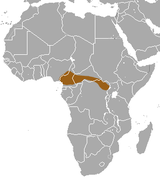
|
Size: 4–18 cm (2–7 in) long, plus 4–11 cm (2–4 in) tail Habitat: Forest Diet: Invertebrates, small mammals, frogs, toads, and lizards |
LC
|
| Hutan shrew
|
C. hutanis Ruedi & Vogel, 1995 |
Sumatra island in Indonesia
|
Size: 4–18 cm (2–7 in) long, plus 4–11 cm (2–4 in) tail Habitat: Forest Diet: Invertebrates, small mammals, frogs, toads, and lizards |
LC
|
| Indochinese shrew
|
C. indochinensis Kloss, 1922 |
Southeastern Asia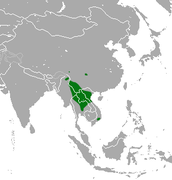
|
Size: 4–18 cm (2–7 in) long, plus 4–11 cm (2–4 in) tail Habitat: Forest Diet: Invertebrates, small mammals, frogs, toads, and lizards |
LC
|
| Iranian shrew
|
C. susiana Redding & Lay, 1978 |
Iran
|
Size: 4–18 cm (2–7 in) long, plus 4–11 cm (2–4 in) tail Habitat: Unknown Diet: Invertebrates, small mammals, frogs, toads, and lizards |
DD
|
| Jackass shrew
|
C. arispa Spitzenberger, 1971 |
Turkey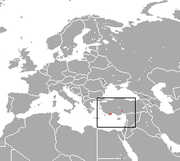
|
Size: 4–18 cm (2–7 in) long, plus 4–11 cm (2–4 in) tail Habitat: Rocky areas Diet: Invertebrates, small mammals, frogs, toads, and lizards |
LC
|
| Jackson's shrew
|
C. jacksoni Thomas, 1904 |
East-central Africa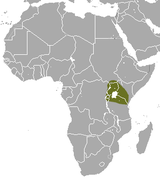
|
Size: 5–9 cm (2–4 in) long, plus 4–7 cm (2–3 in) tail Habitat: Forest Diet: Invertebrates, small mammals, frogs, toads, and lizards |
LC
|
| Javan ghost shrew
|
C. umbra Demos, Achmadi, Handika, Maharadatunkamsi, Rowe, & Esselstyn, 2016 |
Java island in Indonesia | Size: 4–18 cm (2–7 in) long, plus 4–11 cm (2–4 in) tail Habitat: Forest Diet: Invertebrates, small mammals, frogs, toads, and lizards |
NT
|
| Javanese shrew
|
C. maxi Sody, 1936 |
Indonesia and East Timor
|
Size: 4–18 cm (2–7 in) long, plus 4–11 cm (2–4 in) tail Habitat: Forest Diet: Invertebrates, small mammals, frogs, toads, and lizards |
LC
|
| Jenkins's shrew
|
C. jenkinsi Chakraborty, 1978 |
South Andaman Island in India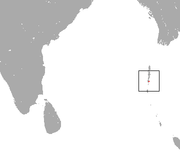
|
Size: 4–18 cm (2–7 in) long, plus 4–11 cm (2–4 in) tail Habitat: Forest Diet: Invertebrates, small mammals, frogs, toads, and lizards |
CR
|
| Jouvenet's shrew
|
C. jouvenetae Heim de Balsac, 1958 |
Western Africa
|
Size: 6–9 cm (2–4 in) long, plus 4–7 cm (2–3 in) tail Habitat: Forest Diet: Invertebrates, small mammals, frogs, toads, and lizards |
LC
|
| Kashmir white-toothed shrew
|
C. pullata Miller, 1911 |
Northern India and Pakistan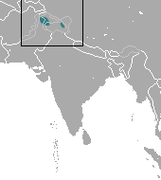
|
Size: 4–18 cm (2–7 in) long, plus 4–11 cm (2–4 in) tail Habitat: Unknown Diet: Invertebrates, small mammals, frogs, toads, and lizards |
DD
|
| Katinka's shrew
|
C. katinka Bate, 1937 |
Western Asia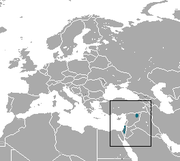
|
Size: 4–18 cm (2–7 in) long, plus 4–11 cm (2–4 in) tail Habitat: Unknown Diet: Invertebrates, small mammals, frogs, toads, and lizards |
DD
|
| Kilimanjaro shrew
|
C. monax Thomas, 1910 |
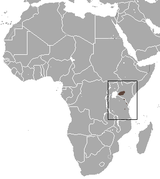
|
Size: 4–18 cm (2–7 in) long, plus 4–11 cm (2–4 in) tail Habitat: Forest Diet: Invertebrates, small mammals, frogs, toads, and lizards |
DD
|
| Kinabalu shrew
|
C. baluensis Thomas, 1898 |
Northern Borneo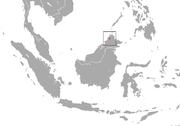
|
Size: 4–18 cm (2–7 in) long, plus 4–11 cm (2–4 in) tail Habitat: Forest, shrubland, and grassland Diet: Invertebrates, small mammals, frogs, toads, and lizards |
LC
|
| Kivu long-haired shrew
|
C. lanosa Heim de Balsac, 1968 |
Central Africa
|
Size: 4–18 cm (2–7 in) long, plus 4–11 cm (2–4 in) tail Habitat: Forest and inland wetlands Diet: Invertebrates, small mammals, frogs, toads, and lizards |
VU
|
| Kivu shrew
|
C. kivuana Heim de Balsac, 1968 |
Central Africa
|
Size: 6–9 cm (2–4 in) long, plus 6–8 cm (2–3 in) tail Habitat: Forest and inland wetlands Diet: Invertebrates, small mammals, frogs, toads, and lizards |
NT
|
| Lamotte's shrew
|
C. lamottei Heim de Balsac, 1968 |
Western Africa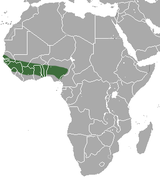
|
Size: 8–9 cm (3–4 in) long, plus 3–6 cm (1–2 in) tail Habitat: Forest and savanna Diet: Invertebrates, small mammals, frogs, toads, and lizards |
LC
|
| Large-headed forest shrew
|
C. grandiceps Hutterer, 1983 |
Western Africa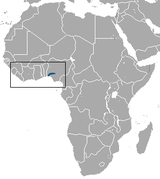
|
Size: 9–12 cm (4–5 in) long, plus 5–8 cm (2–3 in) tail Habitat: Forest Diet: Invertebrates, small mammals, frogs, toads, and lizards |
LC
|
| Latona's shrew
|
C. latona Hollister, 1916 |
Democratic Republic of the Congo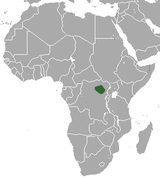
|
Size: 4–18 cm (2–7 in) long, plus 4–11 cm (2–4 in) tail Habitat: Forest Diet: Invertebrates, small mammals, frogs, toads, and lizards |
LC
|
| Lesser Ryukyu shrew
|
C. watasei Kuroda, 1924 |
Southern Japan
|
Size: 4–18 cm (2–7 in) long, plus 4–11 cm (2–4 in) tail Habitat: Shrubland, grassland, and inland wetlands Diet: Invertebrates, small mammals, frogs, toads, and lizards |
LC
|
| Lesser gray-brown musk shrew
|
C. silacea Thomas, 1895 |
Southern Africa
|
Size: 6–8 cm (2–3 in) long, plus 4–6 cm (2 in) tail Habitat: Rocky areas, grassland, shrubland, and savanna Diet: Invertebrates, small mammals, frogs, toads, and lizards |
LC
|
| Lesser red musk shrew | C. hirta Peters, 1852 |
Southern and southeastern Africa
|
Size: 6–10 cm (2–4 in) long, plus 3–6 cm (1–2 in) tail Habitat: Savanna, grassland, and desert Diet: Invertebrates, small mammals, frogs, toads, and lizards |
LC
|
| Lesser rock shrew
|
C. serezkyensis Laptev, 1929 |
Western Asia
|
Size: 4–18 cm (2–7 in) long, plus 4–11 cm (2–4 in) tail Habitat: Unknown Diet: Invertebrates, small mammals, frogs, toads, and lizards |
LC
|
| Lesser white-toothed shrew | C. suaveolens (Pallas, 1811) |
Europe and Asia
|
Size: 4–18 cm (2–7 in) long, plus 4–11 cm (2–4 in) tail Habitat: Forest, shrubland, grassland, rocky areas, and coastal/supratidal marine Diet: Invertebrates, small mammals, frogs, toads, and lizards |
LC
|
| Long-footed shrew
|
C. crenata Brosset, Dubost, & Heim de Balsac, 1965 |
West-central Africa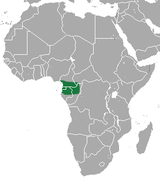
|
Size: 4–18 cm (2–7 in) long, plus 4–11 cm (2–4 in) tail Habitat: Forest Diet: Invertebrates, small mammals, frogs, toads, and lizards |
LC
|
| Long-tailed musk shrew
|
C. dolichura Peters, 1876 |
Central Africa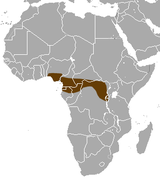
|
Size: 6–7 cm (2–3 in) long, plus 7–8 cm (3 in) tail Habitat: Forest Diet: Invertebrates, small mammals, frogs, toads, and lizards |
LC
|
| Lucina's shrew
|
C. lucina Dippenaar, 1980 |
Ethiopia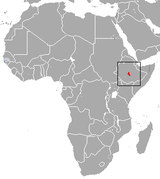
|
Size: 8–10 cm (3–4 in) long, plus 4–6 cm (2 in) tail Habitat: Grassland and inland wetlands Diet: Invertebrates, small mammals, frogs, toads, and lizards |
VU
|
| Ludia's shrew
|
C. ludia Hollister, 1916 |
Central Africa
|
Size: 6–7 cm (2–3 in) long, plus 5–6 cm (2–2 in) tail Habitat: Forest Diet: Invertebrates, small mammals, frogs, toads, and lizards |
LC
|
| Luzon shrew
|
C. grayi Dobson, 1890 |
Philippines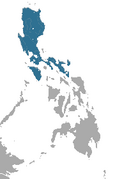
|
Size: 4–18 cm (2–7 in) long, plus 4–11 cm (2–4 in) tail Habitat: Forest Diet: Invertebrates, small mammals, frogs, toads, and lizards |
LC
|
| Lwiro shrew
|
C. lwiroensis Peterhans & Hutterer, 2013 |
Democratic Republic of the Congo | Size: 4–18 cm (2–7 in) long, plus 4–11 cm (2–4 in) tail Habitat: Forest Diet: Invertebrates, small mammals, frogs, toads, and lizards |
DD
|
| MacArthur's shrew
|
C. macarthuri St. Leger, 1934 |
Eastern Africa
|
Size: 4–18 cm (2–7 in) long, plus 4–11 cm (2–4 in) tail Habitat: Savanna Diet: Invertebrates, small mammals, frogs, toads, and lizards |
LC
|
| MacMillan's shrew
|
C. macmillani Dollman, 1915 |
Ethiopia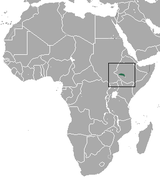
|
Size: 4–18 cm (2–7 in) long, plus 4–11 cm (2–4 in) tail Habitat: Forest and savanna Diet: Invertebrates, small mammals, frogs, toads, and lizards |
NT
|
| Makwassie musk shrew
|
C. maquassiensis Roberts, 1946 |
Southern Africa
|
Size: 5–8 cm (2–3 in) long, plus 4–5 cm (2–2 in) tail Habitat: Grassland and rocky areas Diet: Invertebrates, small mammals, frogs, toads, and lizards |
LC
|
| Malayan shrew
|
C. malayana Robinson & Kloss, 1911 |
Malaysia
|
Size: 4–18 cm (2–7 in) long, plus 4–11 cm (2–4 in) tail Habitat: Forest Diet: Invertebrates, small mammals, frogs, toads, and lizards |
LC
|
| Mamfe shrew
|
C. virgata Sanderson, 1940 |
West-central Africa | Size: 4–18 cm (2–7 in) long, plus 4–11 cm (2–4 in) tail Habitat: Forest and grassland Diet: Invertebrates, small mammals, frogs, toads, and lizards |
LC
|
| Manenguba shrew
|
C. manengubae Hutterer, 1982 |
West-central Africa
|
Size: 7–9 cm (3–4 in) long, plus 6–7 cm (2–3 in) tail Habitat: Forest, shrubland, and grassland Diet: Invertebrates, small mammals, frogs, toads, and lizards |
VU
|
| Mauritanian shrew
|
C. lusitania Dollman, 1915 |
Western and eastern Africa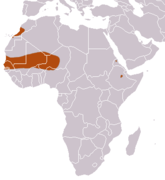
|
Size: 4–7 cm (2–3 in) long, plus 2–4 cm (1–2 in) tail Habitat: Savanna and shrubland Diet: Invertebrates, small mammals, frogs, toads, and lizards |
LC
|
| Mduma's shrew
|
C. mdumai Stanley, Hutterer, Giarla, & Esselstyn, 2015 |
Tanzania | Size: 4–18 cm (2–7 in) long, plus 4–11 cm (2–4 in) tail Habitat: Forest Diet: Invertebrates, small mammals, frogs, toads, and lizards |
EN
|
| Mindanao shrew | C. beatus Miller, 1910 |
Philippines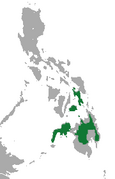
|
Size: 4–18 cm (2–7 in) long, plus 4–11 cm (2–4 in) tail Habitat: Forest Diet: Invertebrates, small mammals, frogs, toads, and lizards |
LC
|
| Mindoro shrew
|
C. mindorus Miller, 1910 |
Philippines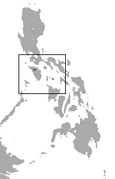
|
Size: 4–18 cm (2–7 in) long, plus 4–11 cm (2–4 in) tail Habitat: Forest Diet: Invertebrates, small mammals, frogs, toads, and lizards |
DD
|
| Montane white-toothed shrew
|
C. montis Thomas, 1906 |
Eastern Africa
|
Size: 4–18 cm (2–7 in) long, plus 4–11 cm (2–4 in) tail Habitat: Forest, shrubland, and grassland Diet: Invertebrates, small mammals, frogs, toads, and lizards |
LC
|
| Moonshine shrew
|
C. luna Dollman, 1910 |
Southeastern Africa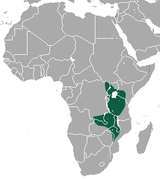
|
Size: 6–11 cm (2–4 in) long, plus 3–7 cm (1–3 in) tail Habitat: Forest Diet: Invertebrates, small mammals, frogs, toads, and lizards |
LC
|
| Mossy forest shrew
|
C. musseri Ruedi & Vogel, 1995 |
Sulawesi island in Indonesia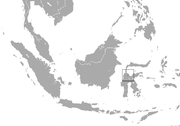
|
Size: 4–18 cm (2–7 in) long, plus 4–11 cm (2–4 in) tail Habitat: Forest Diet: Invertebrates, small mammals, frogs, toads, and lizards |
DD
|
| Mount Nimba giant forest shrew
|
C. nimbasilvanus Hutterer, 2003 |
Western Africa | Size: 4–18 cm (2–7 in) long, plus 4–11 cm (2–4 in) tail Habitat: Forest Diet: Invertebrates, small mammals, frogs, toads, and lizards |
LC
|
| Munissi's shrew
|
C. munissii Stanley, Hutterer, Giarla, & Esselstyn, 2015 |
Tanzania | Size: 4–18 cm (2–7 in) long, plus 4–11 cm (2–4 in) tail Habitat: Forest Diet: Invertebrates, small mammals, frogs, toads, and lizards |
LC
|
| Narrow-headed shrew
|
C. stenocephala Heim de Balsac & Dieterlen, 1979 |
Central Africa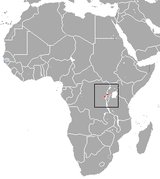
|
Size: 8–11 cm (3–4 in) long, plus 6–9 cm (2–4 in) tail Habitat: Inland wetlands Diet: Invertebrates, small mammals, frogs, toads, and lizards |
VU
|
| Negev shrew
|
C. ramona Ivanitskaya, Shenbrot, & Nevo, 1996 |
Israel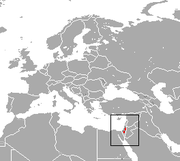
|
Size: 4–18 cm (2–7 in) long, plus 4–11 cm (2–4 in) tail Habitat: Desert Diet: Invertebrates, small mammals, frogs, toads, and lizards |
LC
|
| Negros shrew
|
C. negrina Rabor, 1952 |
Philippines
|
Size: 4–18 cm (2–7 in) long, plus 4–11 cm (2–4 in) tail Habitat: Forest Diet: Invertebrates, small mammals, frogs, toads, and lizards |
EN
|
| Nicobar shrew
|
C. nicobarica Miller, 1902 |
Great Nicobar Island in India
|
Size: 4–18 cm (2–7 in) long, plus 4–11 cm (2–4 in) tail Habitat: Forest Diet: Invertebrates, small mammals, frogs, toads, and lizards |
CR
|
| Nigerian shrew
|
C. nigeriae Dollman, 1915 |
West-central Africa
|
Size: 9–11 cm (4 in) long, plus 5–7 cm (2–3 in) tail Habitat: Forest Diet: Invertebrates, small mammals, frogs, toads, and lizards |
LC
|
| Nimba shrew
|
C. nimbae Heim de Balsac, 1956 |
Western Africa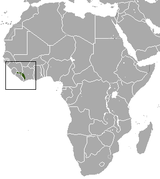
|
Size: 4–18 cm (2–7 in) long, plus 4–11 cm (2–4 in) tail Habitat: Forest Diet: Invertebrates, small mammals, frogs, toads, and lizards |
NT
|
| Niobe's shrew
|
C. niobe Thomas, 1906 |
Central Africa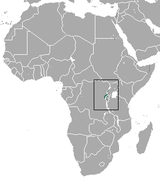
|
Size: 6–9 cm (2–4 in) long, plus 5–7 cm (2–3 in) tail Habitat: Forest and grassland Diet: Invertebrates, small mammals, frogs, toads, and lizards |
LC
|
| North African white-toothed shrew | C. pachyura Küster, 1835 |
Northern Africa and southern Europe
|
Size: 4–18 cm (2–7 in) long, plus 4–11 cm (2–4 in) tail Habitat: Shrubland Diet: Invertebrates, small mammals, frogs, toads, and lizards |
LC
|
| Nyiro shrew
|
C. macowi Dollman, 1915 |
Kenya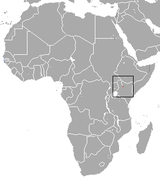
|
Size: 6–8 cm (2–3 in) long, plus 5–6 cm (2–2 in) tail Habitat: Unknown Diet: Invertebrates, small mammals, frogs, toads, and lizards |
DD
|
| Oriental shrew | C. orientalis Jentink, 1890 Two subspecies
|
Indonesia
|
Size: 4–18 cm (2–7 in) long, plus 4–11 cm (2–4 in) tail Habitat: Forest Diet: Invertebrates, small mammals, frogs, toads, and lizards |
LC
|
| Palawan shrew
|
C. palawanensis Taylor, 1934 |
Philippines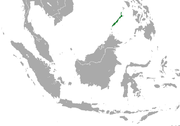
|
Size: 4–18 cm (2–7 in) long, plus 4–11 cm (2–4 in) tail Habitat: Forest and shrubland Diet: Invertebrates, small mammals, frogs, toads, and lizards |
LC
|
| Pale gray shrew
|
C. pergrisea Miller, 1913 |
Pakistan
|
Size: 4–18 cm (2–7 in) long, plus 4–11 cm (2–4 in) tail Habitat: Forest Diet: Invertebrates, small mammals, frogs, toads, and lizards |
DD
|
| Panay shrew
|
C. panayensis Hutterer, 2007 |
Philippines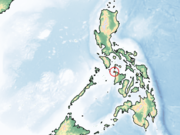
|
Size: 4–18 cm (2–7 in) long, plus 4–11 cm (2–4 in) tail Habitat: Forest Diet: Invertebrates, small mammals, frogs, toads, and lizards |
DD
|
| Peninsular shrew
|
C. negligens Kloss, 1914 |
Southeastern Asia
|
Size: 4–18 cm (2–7 in) long, plus 4–11 cm (2–4 in) tail Habitat: Forest Diet: Invertebrates, small mammals, frogs, toads, and lizards |
LC
|
| Peters's musk shrew
|
C. gracilipes Peters, 1870 |
Tanzania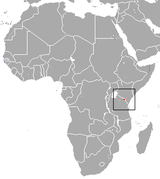
|
Size: About 6 cm (2 in) long, plus 5 cm (2 in) tail Habitat: Unknown Diet: Invertebrates, small mammals, frogs, toads, and lizards |
DD
|
| Phan Luong's shrew
|
C. phanluongi Jenkins, Abramov, Rozhnov, & Olsson, 2010 |
Vietnam and Cambodia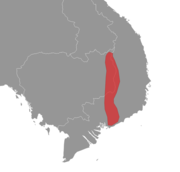
|
Size: 4–18 cm (2–7 in) long, plus 4–11 cm (2–4 in) tail Habitat: Forest Diet: Invertebrates, small mammals, frogs, toads, and lizards |
LC
|
| Phu Hoc shrew
|
C. phuquocensis Abramov, Jenkins, Rozhnov, & Kalinin, 2008 |
Phú Quốc island in Vietnam | Size: 4–18 cm (2–7 in) long, plus 4–11 cm (2–4 in) tail Habitat: Forest Diet: Invertebrates, small mammals, frogs, toads, and lizards |
DD
|
| Pitman's shrew
|
C. pitmani Barclay, 1932 |
Zambia
|
Size: About 5 cm (2 in) long, plus 4 cm (2 in) tail Habitat: Unknown Diet: Invertebrates, small mammals, frogs, toads, and lizards |
DD
|
| Polia's shrew
|
C. polia Hollister, 1916 |
Democratic Republic of the Congo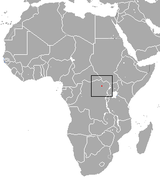
|
Size: About 6 cm (2 in) long, plus 7 cm (3 in) tail Habitat: Unknown Diet: Invertebrates, small mammals, frogs, toads, and lizards |
DD
|
| Rainey's shrew
|
C. raineyi Heller, 1912 |
Kenya
|
Size: 9–10 cm (4 in) long, plus 5–7 cm (2–3 in) tail Habitat: Forest Diet: Invertebrates, small mammals, frogs, toads, and lizards |
DD
|
| Reddish-gray musk shrew
|
C. cyanea (Duvernoy, 1838) |
Southern Africa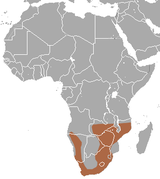
|
Size: 6–10 cm (2–4 in) long, plus 3–7 cm (1–3 in) tail Habitat: Forest, grassland, and caves Diet: Invertebrates |
LC
|
| Roosevelt's shrew
|
C. roosevelti (Heller, 1910) |
Central Africa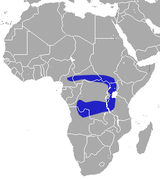
|
Size: 4–18 cm (2–7 in) long, plus 4–11 cm (2–4 in) tail Habitat: Savanna Diet: Invertebrates, small mammals, frogs, toads, and lizards |
LC
|
| Ryukyu shrew
|
C. orii Kuroda, 1924 |
Southern Japan
|
Size: 4–18 cm (2–7 in) long, plus 4–11 cm (2–4 in) tail Habitat: Forest Diet: Invertebrates, small mammals, frogs, toads, and lizards |
EN
|
| Sa Pa shrew | C. sapaensis Jenkins, Abramov, Bannikova, & Rozhnov, 2013 |
Vietnam | Size: 4–18 cm (2–7 in) long, plus 4–11 cm (2–4 in) tail Habitat: Forest and grassland Diet: Invertebrates, small mammals, frogs, toads, and lizards |
DD
|
| Saharan shrew
|
C. tarfayensis Vesmanis & Vesmanis, 1980 |
Mauritania and Morocco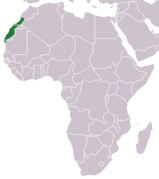
|
Size: 4–18 cm (2–7 in) long, plus 4–11 cm (2–4 in) tail Habitat: Rocky areas and desert Diet: Invertebrates, small mammals, frogs, toads, and lizards |
DD
|
| Sahelian tiny shrew
|
C. pasha Dollman, 1915 |
Scattered northern Africa
|
Size: 4–6 cm (2 in) long, plus 2–4 cm (1–2 in) tail Habitat: Savanna Diet: Invertebrates, small mammals, frogs, toads, and lizards |
LC
|
| Savanna dwarf shrew
|
C. nanilla Thomas, 1909 |
Western and eastern Africa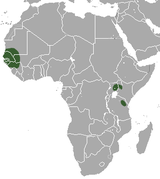
|
Size: 4–6 cm (2–2 in) long, plus 3–5 cm (1–2 in) tail Habitat: Savanna Diet: Invertebrates, small mammals, frogs, toads, and lizards |
LC
|
| Savanna path shrew
|
C. viaria (Geoffroy, 1834) |
Western, central, and eastern Africa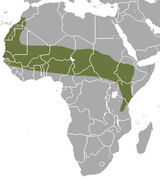
|
Size: 4–18 cm (2–7 in) long, plus 4–11 cm (2–4 in) tail Habitat: Forest and savanna Diet: Invertebrates, small mammals, frogs, toads, and lizards |
LC
|
| Savanna shrew
|
C. fulvastra (Sundevall, 1843) |
Central Africa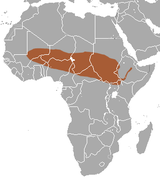
|
Size: 4–18 cm (2–7 in) long, plus 4–11 cm (2–4 in) tail Habitat: Savanna Diet: Invertebrates, small mammals, frogs, toads, and lizards |
LC
|
| Savanna swamp shrew
|
C. longipes Hutterer & Happold, 1983 |
West-central Africa
|
Size: 9–12 cm (4–5 in) long, plus 5–7 cm (2–3 in) tail Habitat: Inland wetlands Diet: Invertebrates, small mammals, frogs, toads, and lizards |
DD
|
| Siberian shrew
|
C. sibirica Dukelsky, 1930 |
Central Asia
|
Size: 4–18 cm (2–7 in) long, plus 4–11 cm (2–4 in) tail Habitat: Forest, grassland, inland wetlands, and desert Diet: Invertebrates, small mammals, frogs, toads, and lizards |
LC
|
| Sibuyan shrew
|
C. ninoyi Esselstyn & Goodman, 2010 |
Philippines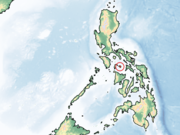
|
Size: 4–18 cm (2–7 in) long, plus 4–11 cm (2–4 in) tail Habitat: Forest Diet: Invertebrates, small mammals, frogs, toads, and lizards |
DD
|
| Sicilian shrew | C. sicula Miller, 1900 Four subspecies
|
Italy and Malta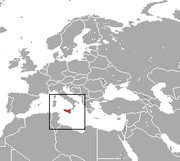
|
Size: 4–18 cm (2–7 in) long, plus 4–11 cm (2–4 in) tail Habitat: Shrubland Diet: Invertebrates, small mammals, frogs, toads, and lizards |
LC
|
| Sinharaja white-toothed shrew
|
C. hikmiya Meegaskumbura, Meegaskumbura, Pethiyagoda, Manamendra-Arachchi, & Schneider, 2007 |
Sri Lanka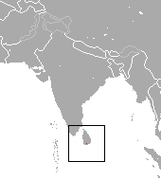
|
Size: 4–18 cm (2–7 in) long, plus 4–11 cm (2–4 in) tail Habitat: Forest Diet: Invertebrates, small mammals, frogs, toads, and lizards |
EN
|
| Small-footed shrew
|
C. parvipes Osgood, 1910 |
Central Africa
|
Size: 6–9 cm (2–4 in) long, plus 3–6 cm (1–2 in) tail Habitat: Forest, savanna, and shrubland Diet: Invertebrates, small mammals, frogs, toads, and lizards |
LC
|
| Smoky white-toothed shrew
|
C. fumosa Thomas, 1904 |
Kenya
|
Size: 4–18 cm (2–7 in) long, plus 4–11 cm (2–4 in) tail Habitat: Forest Diet: Invertebrates, small mammals, frogs, toads, and lizards |
LC
|
| Sokolov's shrew
|
C. sokolovi Jenkins, Abramov, Rozhnov, & Makarova, 2007 |
Vietnam | Size: 4–18 cm (2–7 in) long, plus 4–11 cm (2–4 in) tail Habitat: Forest Diet: Invertebrates, small mammals, frogs, toads, and lizards |
DD
|
| Somali dwarf shrew
|
C. nana Dobson, 1890 |
Ethiopia and Somalia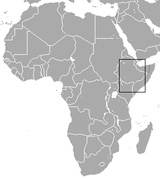
|
Size: About 4 cm (2 in) long, plus 3 cm (1 in) tail Habitat: Grassland Diet: Invertebrates, small mammals, frogs, toads, and lizards |
DD
|
| Somali shrew
|
C. somalica Thomas, 1895 |
Eastern Africa
|
Size: 6–8 cm (2–3 in) long, plus 4–5 cm (2–2 in) tail Habitat: Savanna Diet: Invertebrates, small mammals, frogs, toads, and lizards |
LC
|
| Southeast Asian shrew | C. fuliginosa (Blyth, 1856) |
Southeastern Asian
|
Size: 4–18 cm (2–7 in) long, plus 4–11 cm (2–4 in) tail Habitat: Forest, shrubland, grassland, and rocky areas Diet: Invertebrates, small mammals, frogs, toads, and lizards |
LC
|
| Sri Lankan long-tailed shrew
|
C. miya Phillips, 1929 |
Sri Lanka
|
Size: 4–18 cm (2–7 in) long, plus 4–11 cm (2–4 in) tail Habitat: Forest Diet: Invertebrates, small mammals, frogs, toads, and lizards |
EN
|
| Sulawesi shrew
|
C. lea Miller & Hollister, 1921 |
Sulawesi island in Indonesia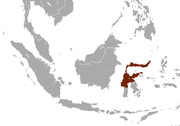
|
Size: 4–18 cm (2–7 in) long, plus 4–11 cm (2–4 in) tail Habitat: Forest Diet: Invertebrates, small mammals, frogs, toads, and lizards |
LC
|
| Sulawesi tiny shrew
|
C. levicula Miller & Hollister, 1921 |
Sulawesi island in Indonesia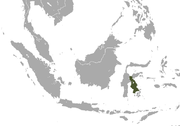
|
Size: 4–18 cm (2–7 in) long, plus 4–11 cm (2–4 in) tail Habitat: Forest Diet: Invertebrates, small mammals, frogs, toads, and lizards |
LC
|
| Sulawesi white-handed shrew
|
C. rhoditis Miller & Hollister, 1921 |
Sulawesi island in Indonesia
|
Size: 4–18 cm (2–7 in) long, plus 4–11 cm (2–4 in) tail Habitat: Forest Diet: Invertebrates, small mammals, frogs, toads, and lizards |
LC
|
| Sumatran giant shrew
|
C. lepidura Lyon, 1908 |
Sumatra island in Indonesia
|
Size: 4–18 cm (2–7 in) long, plus 4–11 cm (2–4 in) tail Habitat: Forest and shrubland Diet: Invertebrates, small mammals, frogs, toads, and lizards |
LC
|
| Sumatran long-tailed shrew
|
C. paradoxura Dobson, 1886 |
Sumatra island in Indonesia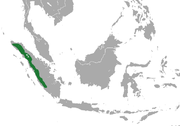
|
Size: 4–18 cm (2–7 in) long, plus 4–11 cm (2–4 in) tail Habitat: Forest Diet: Invertebrates, small mammals, frogs, toads, and lizards |
LC
|
| Sunda shrew | C. monticola Peters, 1870 |
Southeastern Asia
|
Size: 4–18 cm (2–7 in) long, plus 4–11 cm (2–4 in) tail Habitat: Forest Diet: Invertebrates, small mammals, frogs, toads, and lizards |
LC
|
| Swamp musk shrew
|
C. mariquensis (Smith, 1844) Three subspecies
|
Southern Africa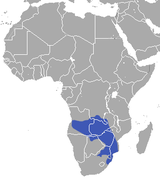
|
Size: 4–18 cm (2–7 in) long, plus 4–11 cm (2–4 in) tail Habitat: Inland wetlands Diet: Invertebrates, small mammals, frogs, toads, and lizards |
LC
|
| São Tomé shrew | C. thomensis (Bocage, 1887) |
São Tomé Island in São Tomé and Príncipe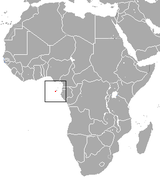
|
Size: 4–18 cm (2–7 in) long, plus 4–11 cm (2–4 in) tail Habitat: Forest Diet: Invertebrates, small mammals, frogs, toads, and lizards |
EN
|
| Taiwanese gray shrew
|
C. tanakae Kuroda, 1938 |
Eastern Asia
|
Size: 4–18 cm (2–7 in) long, plus 4–11 cm (2–4 in) tail Habitat: Forest and grassland Diet: Invertebrates, small mammals, frogs, toads, and lizards |
LC
|
| Tanzanian shrew
|
C. tansaniana Hutterer, 1986 |
Tanzania
|
Size: 8–11 cm (3–4 in) long, plus 5–8 cm (2–3 in) tail Habitat: Forest Diet: Invertebrates, small mammals, frogs, toads, and lizards |
NT
|
| Tarella shrew
|
C. tarella Dollman, 1915 |
Central Africa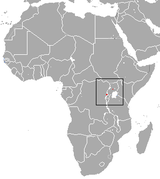
|
Size: 4–18 cm (2–7 in) long, plus 4–11 cm (2–4 in) tail Habitat: Forest Diet: Invertebrates, small mammals, frogs, toads, and lizards |
EN
|
| Telford's shrew
|
C. telfordi Hutterer, 1986 |
Tanzania
|
Size: 10–11 cm (4 in) long, plus 7–9 cm (3–4 in) tail Habitat: Forest Diet: Invertebrates, small mammals, frogs, toads, and lizards |
VU
|
| Thalia's shrew
|
C. thalia Dippenaar, 1980 |
Ethiopia
|
Size: 7–10 cm (3–4 in) long, plus 5–7 cm (2–3 in) tail Habitat: Forest, savanna, shrubland, grassland, and inland wetlands Diet: Invertebrates, small mammals, frogs, toads, and lizards |
LC
|
| Therese's shrew
|
C. theresae Heim de Balsac, 1968 |
Western Africa
|
Size: 7–11 cm (3–4 in) long, plus 3–6 cm (1–2 in) tail Habitat: Forest and savanna Diet: Invertebrates, small mammals, frogs, toads, and lizards |
LC
|
| Thick-tailed shrew
|
C. brunnea Jentink, 1888 Two subspecies
|
Indonesia
|
Size: 4–18 cm (2–7 in) long, plus 4–11 cm (2–4 in) tail Habitat: Forest Diet: Invertebrates, small mammals, frogs, toads, and lizards |
LC
|
| Timor shrew
|
C. tenuis (Müller, 1840) |
Timor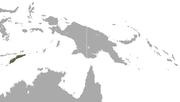
|
Size: 4–18 cm (2–7 in) long, plus 4–11 cm (2–4 in) tail Habitat: Forest Diet: Invertebrates, small mammals, frogs, toads, and lizards |
DD
|
| Turbo shrew
|
C. turba Dollman, 1910 |
Central Africa
|
Size: 9–11 cm (4 in) long, plus 5–6 cm (2–2 in) tail Habitat: Forest Diet: Invertebrates, small mammals, frogs, toads, and lizards |
LC
|
| Ugandan lowland shrew
|
C. selina (Dollman, 1915) |
Kenya and Uganda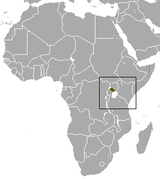
|
Size: 7–9 cm (3–4 in) long, plus 5–7 cm (2–3 in) tail Habitat: Forest and inland wetlands Diet: Invertebrates, small mammals, frogs, toads, and lizards |
DD
|
| Ugandan musk shrew
|
C. mutesae Heller, 1910 |
Central Africa
|
Size: About 11 cm (4 in) long, plus 6 cm (2 in) tail Habitat: Forest Diet: Invertebrates, small mammals, frogs, toads, and lizards |
DD
|
| Ultimate shrew
|
C. ultima Dollman, 1915 |
Kenya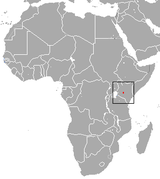
|
Size: About 9 cm (4 in) long, plus 6 cm (2 in) tail Habitat: Forest Diet: Invertebrates, small mammals, frogs, toads, and lizards |
DD
|
| Upemba shrew
|
C. zimmeri Osgood, 1936 |
Democratic Republic of the Congo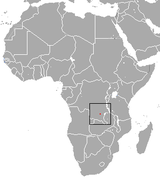
|
Size: 11–13 cm (4–5 in) long, plus 4–6 cm (2–2 in) tail Habitat: Unknown Diet: Invertebrates, small mammals, frogs, toads, and lizards |
DD
|
| Usambara shrew
|
C. usambarae Dippenaar, 1980 |
Tanzania
|
Size: 7–9 cm (3–4 in) long, plus 5–7 cm (2–3 in) tail Habitat: Forest Diet: Invertebrates, small mammals, frogs, toads, and lizards |
VU
|
| Ussuri white-toothed shrew | C. lasiura (Dobson, 1890) |
Eastern Asia
|
Size: 4–18 cm (2–7 in) long, plus 4–11 cm (2–4 in) tail Habitat: Grassland Diet: Insects and other invertebrates, as well as small vertebrates |
LC
|
| Voi shrew
|
C. voi Osgood, 1910 |
Central and eastern Africa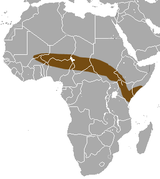
|
Size: 4–18 cm (2–7 in) long, plus 4–11 cm (2–4 in) tail Habitat: Savanna Diet: Invertebrates, small mammals, frogs, toads, and lizards |
LC
|
| Voracious shrew | C. vorax Allen, 1923 |
Southeastern Asia
|
Size: 4–18 cm (2–7 in) long, plus 4–11 cm (2–4 in) tail Habitat: Forest Diet: Invertebrates, small mammals, frogs, toads, and lizards |
LC
|
| West African long-tailed shrew
|
C. muricauda (Miller, 1900) |
Western Africa
|
Size: 5–7 cm (2–3 in) long, plus tail Habitat: Forest Diet: Invertebrates, small mammals, frogs, toads, and lizards |
LC
|
| West African pygmy shrew
|
C. obscurior Heim de Balsac, 1958 |
Western Africa
|
Size: 4–5 cm (2–2 in) long, plus 3–4 cm (1–2 in) tail Habitat: Forest Diet: Invertebrates, small mammals, frogs, toads, and lizards |
LC
|
| Whitaker's shrew
|
C. whitakeri De Winton, 1898 |
Northwestern Africa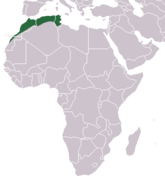
|
Size: 5–7 cm (2–3 in) long, plus 2–4 cm (1–2 in) tail Habitat: Coastal marine, intertidal marine, and shrubland Diet: Invertebrates, small mammals, frogs, toads, and lizards |
LC
|
| Wimmer's shrew
|
C. wimmeri Heim de Balsac & Aellen, 1958 |
Ivory Coast
|
Size: 8–9 cm (3–4 in) long, plus 5–6 cm (2–2 in) tail Habitat: Forest Diet: Invertebrates, small mammals, frogs, toads, and lizards |
CR
|
| Xanthippe's shrew
|
C. xantippe Osgood, 1910 |
Kenya and Tanzania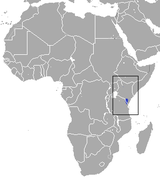
|
Size: 8–10 cm (3–4 in) long, plus 5–7 cm (2–3 in) tail Habitat: Savanna and shrubland Diet: Invertebrates, small mammals, frogs, toads, and lizards |
LC
|
| Yankari shrew
|
C. yankariensis Hutterer & Jenkins, 1980 |
Central and eastern Africa
|
Size: 5–7 cm (2–3 in) long, plus 3–5 cm (1–2 in) tail Habitat: Savanna Diet: Invertebrates, small mammals, frogs, toads, and lizards |
LC
|
| Zaphir's shrew
|
C. zaphiri Dollman, 1915 |
Ethiopia and Kenya
|
Size: About 10 cm (4 in) long, plus 6 cm (2 in) tail Habitat: Unknown Diet: Invertebrates, small mammals, frogs, toads, and lizards |
DD
|
| Zarudny's rock shrew | C. zarudnyi Ognew, 1928 |
Central Asia
|
Size: 4–18 cm (2–7 in) long, plus 4–11 cm (2–4 in) tail Habitat: Desert Diet: Invertebrates, small mammals, frogs, toads, and lizards |
LC
|
| Common name | Scientific name and subspecies | Range | Size and ecology | IUCN status and estimated population |
|---|---|---|---|---|
| Piebald shrew | D. pulchellum (Lichtenstein, 1823) |
Central Asia
|
Size: 5–8 cm (2–3 in) long, plus 2–4 cm (1–2 in) tail Habitat: Desert Diet: Insects, as well as small lizards |
LC
|
| Common name | Scientific name and subspecies | Range | Size and ecology | IUCN status and estimated population |
|---|---|---|---|---|
| Kelaart's long-clawed shrew
|
F. feroculus (Kelaart, 1850) |
Southern India and Sri Lanka
|
Size: 10–12 cm (4–5 in) long, plus 5–8 cm (2–3 in) tail Habitat: Forest, grassland, and inland wetlands Diet: Earthworms, small vertebrates, and plants |
EN
|
| Common name | Scientific name and subspecies | Range | Size and ecology | IUCN status and estimated population |
|---|---|---|---|---|
| Grauer's large-headed shrew
|
P. graueri Hutterer, 1986 |
Democratic Republic of the Congo
|
Size: 6–10 cm (2–4 in) long, plus 3–5 cm (1–2 in) tail Habitat: Forest Diet: Insects |
DD
|
| Greater large-headed shrew
|
P. maxima Heim de Balsac, 1959 |
Central Africa
|
Size: 6–10 cm (2–4 in) long, plus 3–5 cm (1–2 in) tail Habitat: Forest and inland wetlands Diet: Insects |
LC
|
| Lesser large-headed shrew
|
P. schoutedeni Heim de Balsac, 1956 |
West-central Africa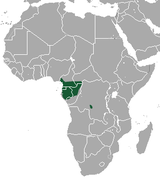
|
Size: 6–10 cm (2–4 in) long, plus 3–5 cm (1–2 in) tail Habitat: Forest Diet: Insects |
LC
|
| Common name | Scientific name and subspecies | Range | Size and ecology | IUCN status and estimated population |
|---|---|---|---|---|
| Ruwenzori shrew
|
R. suncoides (Osgood, 1936) |
Central Africa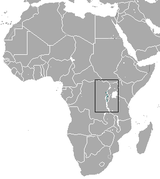
|
Size: 9–10 cm (4 in) long, plus 5–7 cm (2–3 in) tail Habitat: Inland wetlands and forest Diet: Mollusks and small vertebrates |
VU
|
| Common name | Scientific name and subspecies | Range | Size and ecology | IUCN status and estimated population |
|---|---|---|---|---|
| Hero shrew | S. somereni (Thomas, 1910) |
Central Africa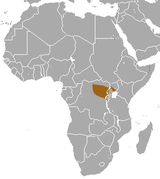
|
Size: 12–15 cm (5–6 in) long, plus 6–10 cm (2–4 in) tail Habitat: Forest Diet: Insects, earthworms, and small vertebrates |
LC
|
| Thor's hero shrew
|
S. thori Stanley, Malekani, &Gambalemoke, 2013 |
Democratic Republic of the Congo | Size: 12–15 cm (5–6 in) long, plus 6–10 cm (2–4 in) tail Habitat: Forest Diet: Small animals and plants |
DD
|
| Common name | Scientific name and subspecies | Range | Size and ecology | IUCN status and estimated population |
|---|---|---|---|---|
| Pearson's long-clawed shrew
|
S. pearsoni Thomas, 1924 |
Sri Lanka
|
Size: 12–15 cm (5–6 in) long, plus 5–7 cm (2–3 in) tail Habitat: Forest and grassland Diet: Insects, earthworms, and small vertebrates |
EN
|
| Common name | Scientific name and subspecies | Range | Size and ecology | IUCN status and estimated population |
|---|---|---|---|---|
| Anderson's shrew
|
S. stoliczkanus (Anderson, 1877) |
Southern Asia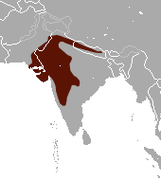
|
Size: 5–9 cm (2–4 in) long, plus 3–10 cm (1–4 in) tail Habitat: Forest and grassland Diet: Insects |
LC
|
| Asian highland shrew
|
S. montanus (Kelaart, 1850) |
Southern India and Sri Lanka
|
Size: 5–9 cm (2–4 in) long, plus 3–10 cm (1–4 in) tail Habitat: Forest and grassland Diet: Insects |
LC
|
| Asian house shrew | S. murinus (Linnaeus, 1766) |
Asia and Africa (introduced in red)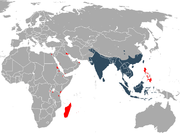
|
Size: 10–5 cm (4–2 in) long, plus 5–9 cm (2–4 in) tail Habitat: Forest, savanna, shrubland, grassland, and inland wetlands Diet: Insects and small mammals, as well as plants |
LC
|
| Black shrew
|
S. ater (Medway, 1965) |
Northern Borneo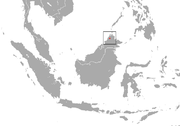
|
Size: 5–9 cm (2–4 in) long, plus 3–10 cm (1–4 in) tail Habitat: Forest Diet: Insects |
DD
|
| Bornean pygmy shrew
|
S. hosei (Thomas, 1893) |
Borneo
|
Size: 5–9 cm (2–4 in) long, plus 3–10 cm (1–4 in) tail Habitat: Forest Diet: Insects |
DD
|
| Climbing shrew
|
S. megalura (Jentink, 1888) |
Sub-Saharan Africa
|
Size: 5–6 cm (2 in) long, plus 8–10 cm (3–4 in) tail Habitat: Forest and savanna Diet: Insects |
LC
|
| Day's shrew
|
S. dayi (Dodson, 1888) |
Southern India
|
Size: 5–9 cm (2–4 in) long, plus 3–10 cm (1–4 in) tail Habitat: Forest and grassland Diet: Insects |
EN
|
| Etruscan shrew | S. etruscus (Savi, 1822) |
Europe, northern Africa, and Asia
|
Size: 3–5 cm (1–2 in) long, plus 2–3 cm (1 in) tail Habitat: Forest, shrubland, grassland, and desert Diet: Insects |
LC
|
| Flores shrew
|
S. mertensi Kock, 1974 |
Flores island in Indonesia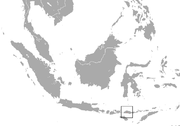
|
Size: 5–9 cm (2–4 in) long, plus 3–10 cm (1–4 in) tail Habitat: Forest Diet: Insects |
EN
|
| Greater dwarf shrew | S. lixus (Thomas, 1898) |
Southern Africa
|
Size: 5–9 cm (2–4 in) long, plus 3–6 cm (1–2 in) tail Habitat: Forest, savanna, shrubland, and grassland Diet: Insects |
LC
|
| Hutu-Tutsi dwarf shrew
|
S. hututsi Peterhans & Hutterer, 2009 |
Central Africa | Size: 4–6 cm (2 in) long, plus 2–3 cm (1 in) tail Habitat: Forest and shrubland Diet: Insects |
DD
|
| Jungle shrew
|
S. zeylanicus Phillips, 1928 |
Sri Lanka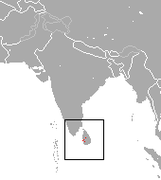
|
Size: 5–9 cm (2–4 in) long, plus 3–10 cm (1–4 in) tail Habitat: Forest Diet: Insects |
EN
|
| Least dwarf shrew
|
S. infinitesimus (Heller, 1912) |
South Africa and Kenya
|
Size: 5–7 cm (2–3 in) long, plus 2–4 cm (1–2 in) tail Habitat: Forest and grassland Diet: Insects |
LC
|
| Lesser dwarf shrew
|
S. varilla (Thomas, 1895) |
Southern Africa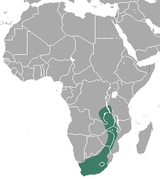
|
Size: 5–7 cm (2–3 in) long, plus 2–5 cm (1–2 in) tail Habitat: Forest, savanna, shrubland, and grassland Diet: Insects |
LC
|
| Malayan pygmy shrew
|
S. malayanus (Kloss, 1917) |
Malaysia and Thailand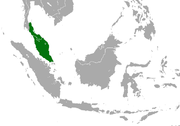
|
Size: 5–9 cm (2–4 in) long, plus 3–10 cm (1–4 in) tail Habitat: Forest Diet: Insects |
LC
|
| Remy's pygmy shrew
|
S. remyi Brosset, Dubost, & Heim de Balsac, 1965 |
West-central Africa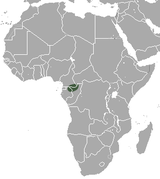
|
Size: 4–5 cm (2 in) long, plus 1–3 cm (0.4–1.2 in) tail Habitat: Forest Diet: Insects |
LC
|
| Sri Lankan shrew
|
S. fellowesgordoni Phillips, 1932 |
Sri Lanka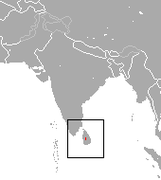
|
Size: 5–9 cm (2–4 in) long, plus 3–10 cm (1–4 in) tail Habitat: Forest and grassland Diet: Insects |
EN
|
| Taita shrew
|
S. aequatorius (Heller, 1912) |
Kenya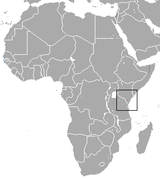
|
Size: 6–9 cm (2–4 in) long, plus 5–7 cm (2–3 in) tail Habitat: Forest Diet: Insects |
EN
|
| Common name | Scientific name and subspecies | Range | Size and ecology | IUCN status and estimated population |
|---|---|---|---|---|
| Bamenda pygmy shrew
|
S. silvanorum (Hutterer, Riegert, & Sedláček, 2009) |
Cameroon | Size: 4–10 cm (2–4 in) long, plus 4–9 cm (2–4 in) tail Habitat: Forest and grassland Diet: Insects |
DD
|
| Bioko forest shrew
|
S. isabellae Heim de Balsac, 1968 |
West-central Africa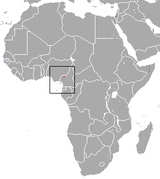
|
Size: 4–10 cm (2–4 in) long, plus 4–9 cm (2–4 in) tail Habitat: Forest and grassland Diet: Insects |
VU
|
| Cameroonian forest shrew
|
S. camerunensis Heim de Balsac, 1968 |
West-central Africa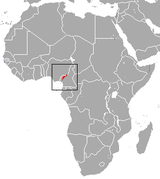
|
Size: 5–6 cm (2 in) long, plus 5–7 cm (2–3 in) tail Habitat: Forest and grassland Diet: Insects |
VU
|
| Corbet's forest shrew
|
S. corbeti Hutterer, 2009 |
West-central Africa | Size: 4–10 cm (2–4 in) long, plus 4–9 cm (2–4 in) tail Habitat: Forest Diet: Insects |
DD
|
| Dudu Akaibe's pygmy shrew
|
S. akaibei Mukinzi, Hutterer, & Barriere, 2009 |
Democratic Republic of the Congo | Size: 4–10 cm (2–4 in) long, plus 4–9 cm (2–4 in) tail Habitat: Forest Diet: Insects |
DD
|
| Grant's forest shrew
|
S. granti Thomas, 1907 Two subspecies
|
Central Africa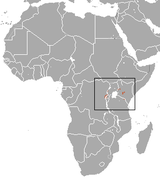
|
Size: 4–7 cm (2–3 in) long, plus 4–7 cm (2–3 in) tail Habitat: Forest Diet: Insects |
LC
|
| Greater forest shrew
|
S. ollula Thomas, 1913 |
Central Africa
|
Size: 5–8 cm (2–3 in) long, plus 1–2 cm (0–1 in) tail Habitat: Forest Diet: Insects |
LC
|
| Howell's forest shrew
|
S. howelli Jenkins, 1984 |
Tanzania
|
Size: 5–8 cm (2–3 in) long, plus 3–5 cm (1–2 in) tail Habitat: Forest Diet: Insects |
LC
|
| Johnston's forest shrew
|
S. johnstoni (Dobson, 1888) |
West-central and central Africa
|
Size: 7–10 cm (3–4 in) long, plus 4–7 cm (2–3 in) tail Habitat: Forest Diet: Insects |
LC
|
| Kongana shrew
|
S. konganensis Ray & Hutterer, 1996 |
Central Africa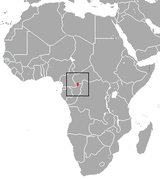
|
Size: 4–10 cm (2–4 in) long, plus 4–9 cm (2–4 in) tail Habitat: Forest Diet: Insects |
DD
|
| Lesser forest shrew | S. oriundus Hollister, 1916 |
Central Africa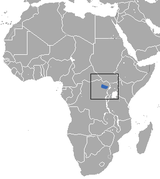
|
Size: 4–10 cm (2–4 in) long, plus 4–9 cm (2–4 in) tail Habitat: Forest Diet: Insects |
DD
|
| Moon forest shrew
|
S. lunaris Thomas, 1906 |
Central Africa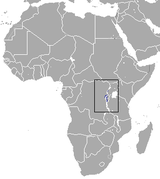
|
Size: 7–10 cm (3–4 in) long, plus 4–6 cm (2 in) tail Habitat: Forest Diet: Insects |
NT
|
| Mount Cameroon forest shrew
|
S. morio (Gray, 1862) |
West-central Africa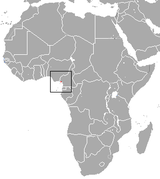
|
Size: 6–8 cm (2–3 in) long, plus 5–6 cm (2 in) tail Habitat: Forest Diet: Insects |
EN
|
| Rain forest shrew
|
S. pluvialis Hutterer & Schlitter, 1996 |
West-central Africa
|
Size: 6–8 cm (2–3 in) long, plus 5–8 cm (2–3 in) tail Habitat: Forest Diet: Insects |
DD
|
| Volcano shrew
|
S. vulcanorum Hutterer & Verheyan, 1985 |
Central Africa
|
Size: 4–6 cm (2 in) long, plus 4–7 cm (2–3 in) tail Habitat: Forest and inland wetlands Diet: Insects |
LC
|
References
- ^ Nowak, p. 224
- Jenkins, P. D.; Lunde, D. P.; Moncrieff, C. B. (2009). "Descriptions of New Species of Crocidura (Soricomorpha: Soricidae) from Mainland Southeast Asia, with Synopses of Previously Described Species and Remarks on Biogeography" (PDF). Bulletin of the American Museum of Natural History. 331: 356–405. doi:10.1206/582-10.1. S2CID 84803490. Archived (PDF) from the original on 2020-03-13. Retrieved 2024-04-12.
- "Fossilworks: Crocidurinae". Paleobiology Database. University of Wisconsin–Madison. Archived from the original on June 6, 2023. Retrieved April 11, 2024.
- Nations, J. A.; Giarla, T. C.; Morni, M. A.; William Dee, J.; Swanson, M. T.; Hiller, A. E.; Khan, F. A. A.; Esselstyn, J. A. (2022). "Molecular data from the holotype of the enigmatic Bornean Black Shrew, Suncus ater Medway, 1965 (Soricidae, Crocidurinae), place it in the genus Palawanosorex". ZooKeys (1137): 17–31. Bibcode:2022ZooK.1137...17N. doi:10.3897/zookeys.1137.94217. PMC 9836656. PMID 36760481.
- Wilson, Reeder, pp. 224-262
- ^ Nowak, p. 221
- ^ Cassola, F. (2017) . "Crocidura nigrofusca". IUCN Red List of Threatened Species. 2016: e.T41346A115180069. doi:10.2305/IUCN.UK.2016-3.RLTS.T41346A22310000.en.
- Kingdon, p. 64
- ^ Hutterer, R. (2016). "Crocidura caliginea". IUCN Red List of Threatened Species. 2016: e.T5623A22300539. doi:10.2305/IUCN.UK.2016-2.RLTS.T5623A22300539.en.
- ^ Kingdon, p. 119
- ^ Cassola, F. (2017) . "Crocidura olivieri". IUCN Red List of Threatened Species. 2016: e.T41348A115180235. doi:10.2305/IUCN.UK.2016-3.RLTS.T41348A22309617.en.
- ^ Molur, S. (2017) . "Crocidura andamanensis". IUCN Red List of Threatened Species. 2016: e.T5595A115076487. doi:10.2305/IUCN.UK.2016-3.RLTS.T5595A22303530.en.
- ^ Molur, S. (2017) . "Crocidura hispida". IUCN Red List of Threatened Species. 2016: e.T5603A115076898. doi:10.2305/IUCN.UK.2016-3.RLTS.T5603A22299245.en.
- ^ Dando, T.; Kennerley, R.; Jenkins, P. (2019). "Crocidura annamitensis". IUCN Red List of Threatened Species. 2019: e.T48296764A48296771. doi:10.2305/IUCN.UK.2019-1.RLTS.T48296764A48296771.en.
- Kingdon, p. 58
- ^ Kennerley, R. (2017) . "Crocidura ansellorum". IUCN Red List of Threatened Species. 2016: e.T5558A115073943. doi:10.2305/IUCN.UK.2016-3.RLTS.T5558A22305108.en.
- ^ Amori, G. (2019). "Crocidura arabica". IUCN Red List of Threatened Species. 2019: e.T40618A22295560. doi:10.2305/IUCN.UK.2019-1.RLTS.T40618A22295560.en.
- ^ Gerrie, R.; Kennerley, R. (2017) . "Crocidura armenica". IUCN Red List of Threatened Species. 2016: e.T5596A115076665. doi:10.2305/IUCN.UK.2016-3.RLTS.T5596A22303457.en.
- ^ Heaney, L.; Molur, S. (2018) . "Crocidura attenuata". IUCN Red List of Threatened Species. 2017: e.T48296412A123807388. doi:10.2305/IUCN.UK.2017-3.RLTS.T48296412A22295645.en.
- ^ Temple, H. (2017) . "Crocidura shantungensis". IUCN Red List of Threatened Species. 2016: e.T5617A115077696. doi:10.2305/IUCN.UK.2016-3.RLTS.T5617A22300721.en.
- ^ Kennerley, R.; Lavrenchenko, L. (2017) . "Crocidura baileyi". IUCN Red List of Threatened Species. 2016: e.T5559A115074097. doi:10.2305/IUCN.UK.2016-3.RLTS.T5559A22305001.en.
- Kingdon, p. 62
- ^ Lavrenchenko, L. (2017) . "Crocidura bottegoides". IUCN Red List of Threatened Species. 2016: e.T5622A115078080. doi:10.2305/IUCN.UK.2016-3.RLTS.T5622A22300328.en.
- ^ Gerrie, R.; Kennerley, R. (2017) . "Crocidura vosmaeri". IUCN Red List of Threatened Species. 2016: e.T136447A115207832. doi:10.2305/IUCN.UK.2016-3.RLTS.T136447A22298267.en.
- ^ Dando, T.; Kennerley, R. (2020) . "Crocidura batakorum". IUCN Red List of Threatened Species. 2020: e.T48297939A166612831. doi:10.2305/IUCN.UK.2020-1.RLTS.T48297939A166612831.en.
- ^ Hutterer, R. (2016). "Crocidura batesi". IUCN Red List of Threatened Species. 2016: e.T40620A22295796. doi:10.2305/IUCN.UK.2016-2.RLTS.T40620A22295796.en.
- ^ Cassola, F. (2016). "Crocidura beccarii". IUCN Red List of Threatened Species. 2016: e.T5598A22302844. doi:10.2305/IUCN.UK.2016-2.RLTS.T5598A22302844.en.
- ^ Dando, T.; Kennerley, R. (2019). "Crocidura yaldeni". IUCN Red List of Threatened Species. 2019: e.T112517512A112517515. doi:10.2305/IUCN.UK.2019-1.RLTS.T112517512A112517515.en.
- Kingdon, p. 82
- ^ Hutterer, R.; Howell, K. (2017) . "Crocidura fuscomurina". IUCN Red List of Threatened Species. 2016: e.T40633A115176835. doi:10.2305/IUCN.UK.2016-3.RLTS.T40633A22293871.en.
- ^ Raese, Joshua (2004). "Crocidura leucodon". Animal Diversity Web. University of Michigan. Archived from the original on April 1, 2023. Retrieved March 30, 2024.
- ^ Shenbrot, G.; Hutterer, R.; Kryštufek, B.; Yigit, N.; Mitsainas, G.; Palomo, L. (2021) . "Crocidura leucodon". IUCN Red List of Threatened Species. 2021: e.T29651A197500630. doi:10.2305/IUCN.UK.2021-1.RLTS.T29651A197500630.en.
- ^ Cassola, F. (2019). "Crocidura nigripes". IUCN Red List of Threatened Species. 2019: e.T41447A22301211. doi:10.2305/IUCN.UK.2019-1.RLTS.T41447A22301211.en.
- Kingdon, p. 114
- ^ Hutterer, R. (2016). "Crocidura nigricans". IUCN Red List of Threatened Species. 2016: e.T41345A22310112. doi:10.2305/IUCN.UK.2016-2.RLTS.T41345A22310112.en.
- ^ Cassola, F. (2016). "Crocidura foetida". IUCN Red List of Threatened Species. 2016: e.T136578A22310170. doi:10.2305/IUCN.UK.2016-2.RLTS.T136578A22310170.en.
- Kingdon, p. 61
- ^ Gerrie, R.; Kennerley, R. (2017) . "Crocidura bottegi". IUCN Red List of Threatened Species. 2016: e.T40621A115175776. doi:10.2305/IUCN.UK.2016-3.RLTS.T40621A22295879.en.
- Kingdon, p. 63
- ^ Dando, T. (2021). "Crocidura buettikoferi". IUCN Red List of Threatened Species. 2021: e.T40622A22295963. doi:10.2305/IUCN.UK.2021-2.RLTS.T40622A22295963.en.
- Kingdon, p. 96
- ^ Cassola, F. (2017) . "Crocidura littoralis". IUCN Red List of Threatened Species. 2016: e.T41330A115178517. doi:10.2305/IUCN.UK.2016-3.RLTS.T41330A22305865.en.
- ^ Kennerley, R. (2018). "Crocidura picea". IUCN Red List of Threatened Species. 2018: e.T5636A22301535. doi:10.2305/IUCN.UK.2018-1.RLTS.T5636A22301535.en.
- ^ Kennerley, R. (2019). "Crocidura canariensis". IUCN Red List of Threatened Species. 2019: e.T5560A3031266. doi:10.2305/IUCN.UK.2019-1.RLTS.T5560A3031266.en.
- ^ Kennerley, R. (2017) . "Crocidura caspica". IUCN Red List of Threatened Species. 2016: e.T136444A115207731. doi:10.2305/IUCN.UK.2016-3.RLTS.T136444A22297843.en.
- ^ Johnston, C.; Smith, A. T. (2016). "Crocidura rapax". IUCN Red List of Threatened Species. 2016: e.T136783A22294279. doi:10.2305/IUCN.UK.2016-1.RLTS.T136783A22294279.en.
- ^ Woinarski, J.; Burbidge, A. A.; Lumsden, L. (2016). "Crocidura trichura". IUCN Red List of Threatened Species. 2016: e.T136379A22304640. doi:10.2305/IUCN.UK.2016-3.RLTS.T136379A22304640.en.
- Kingdon, p. 65
- ^ Hutterer, R.; Granjon, L. (2017) . "Crocidura cinderella". IUCN Red List of Threatened Species. 2016: e.T41317A115177629. doi:10.2305/IUCN.UK.2016-3.RLTS.T41317A22307375.en.
- ^ Hutterer, R. (2016). "Crocidura congobelgica". IUCN Red List of Threatened Species. 2016: e.T5561A22305663. doi:10.2305/IUCN.UK.2016-2.RLTS.T5561A22305663.en.
- ^ Jenkins, P.; Dando, T.; Kennerley, R. (2017). "Crocidura cranbrooki". IUCN Red List of Threatened Species. 2017: e.T48296479A48296547. doi:10.2305/IUCN.UK.2017-3.RLTS.T48296479A48296547.en.
- ^ Mitsainas, G.; Vohralík, V.; Kennerley, R. (2019). "Crocidura zimmermanni". IUCN Red List of Threatened Species. 2019: e.T5588A90818329. doi:10.2305/IUCN.UK.2019-1.RLTS.T5588A90818329.en.
- Kingdon, p. 68
- ^ Hutterer, R.; Jenkins, P. (2017) . "Crocidura crossei". IUCN Red List of Threatened Species. 2016: e.T40624A115175904. doi:10.2305/IUCN.UK.2016-3.RLTS.T40624A22296115.en.
- Kingdon, p. 56
- ^ Hutterer, R. (2022). "Crocidura aleksandrisi". IUCN Red List of Threatened Species. 2022: e.T40617A22295522. doi:10.2305/IUCN.UK.2022-2.RLTS.T40617A22295522.en.
- Kingdon, p. 70
- ^ Hutterer, R. (2016). "Crocidura denti". IUCN Red List of Threatened Species. 2016: e.T40626A22294411. doi:10.2305/IUCN.UK.2016-2.RLTS.T40626A22294411.en.
- Kingdon, p. 133
- ^ Hutterer, R.; Howell, K.; Baxter, R. (2017) . "Crocidura smithii". IUCN Red List of Threatened Species. 2016: e.T41358A115181556. doi:10.2305/IUCN.UK.2016-3.RLTS.T41358A22311310.en.
- Kingdon, p. 71
- ^ Dando, T.; Kennerley, R. (2019). "Crocidura desperata". IUCN Red List of Threatened Species. 2019: e.T5624A22300601. doi:10.2305/IUCN.UK.2019-3.RLTS.T5624A22300601.en.
- ^ Gerrie, R.; Kennerley, R. (2016). "Crocidura dhofarensis". IUCN Red List of Threatened Species. 2016: e.T5599A22303111. doi:10.2305/IUCN.UK.2016-3.RLTS.T5599A22303111.en.
- ^ Gerrie, R.; Kennerley, R. (2016). "Crocidura douceti". IUCN Red List of Threatened Species. 2016: e.T40629A22295053. doi:10.2305/IUCN.UK.2016-3.RLTS.T40629A22295053.en.
- ^ Cassola, F. (2017) . "Crocidura dsinezumi". IUCN Red List of Threatened Species. 2016: e.T40627A115176222. doi:10.2305/IUCN.UK.2016-3.RLTS.T40627A22294822.en.
- Kingdon, p. 57
- ^ Dando, T. (2021). "Crocidura allex". IUCN Red List of Threatened Species. 2021: e.T5620A22301002. doi:10.2305/IUCN.UK.2021-2.RLTS.T5620A22301002.en.
- Kingdon, p. 128
- ^ Kryštufek, B.; Kennerley, R. (2019). "Crocidura religiosa". IUCN Red List of Threatened Species. 2019: e.T5616A114077410. doi:10.2305/IUCN.UK.2019-1.RLTS.T5616A114077410.en.
- ^ Kennerley, R. (2017) . "Crocidura eisentrauti". IUCN Red List of Threatened Species. 2016: e.T5565A115074367. doi:10.2305/IUCN.UK.2016-3.RLTS.T5565A22305483.en.
- ^ Cassola, F. (2017) . "Crocidura elgonius". IUCN Red List of Threatened Species. 2016: e.T5625A115078232. doi:10.2305/IUCN.UK.2016-3.RLTS.T5625A22299870.en.
- ^ Cassola, F. (2016). "Crocidura elongata". IUCN Red List of Threatened Species. 2016: e.T40630A22294921. doi:10.2305/IUCN.UK.2016-2.RLTS.T40630A22294921.en.
- ^ Ceríaco, L.; Dando, T.; Kennerley, R. (2019). "Crocidura fingui". IUCN Red List of Threatened Species. 2019: e.T111739377A111739380. doi:10.2305/IUCN.UK.2019-1.RLTS.T111739377A111739380.en.
- Kingdon, p. 76
- ^ Gerrie, R.; Kennerley, R. (2017) . "Crocidura fischeri". IUCN Red List of Threatened Species. 2016: e.T5627A115078492. doi:10.2305/IUCN.UK.2016-3.RLTS.T5627A22300055.en.
- ^ Kennerley, R.; Gerrie, R. (2017) . "Crocidura planiceps". IUCN Red List of Threatened Species. 2016: e.T41351A115180837. doi:10.2305/IUCN.UK.2016-3.RLTS.T41351A22310439.en.
- Kingdon, p. 78
- ^ Kennerley, R.; Saleh, M. (2017). "Crocidura floweri". IUCN Red List of Threatened Species. 2017: e.T5600A103275783. doi:10.2305/IUCN.UK.2017-2.RLTS.T5600A103275783.en.
- Kingdon, p. 79
- ^ Cassola, F. (2017) . "Crocidura foxi". IUCN Red List of Threatened Species. 2016: e.T5629A115078628. doi:10.2305/IUCN.UK.2016-3.RLTS.T5629A22299485.en.
- ^ Kingdon, p. 126
- ^ Cassola, F. (2017) . "Crocidura poensis". IUCN Red List of Threatened Species. 2016: e.T41352A115180968. doi:10.2305/IUCN.UK.2016-3.RLTS.T41352A22310266.en.
- ^ Jenkins, P.; Dando, T.; Kennerley, R. (2019). "Crocidura gathornei". IUCN Red List of Threatened Species. 2019: e.T111765432A111767002. doi:10.2305/IUCN.UK.2019-1.RLTS.T111765432A111767002.en.
- Kingdon, p. 83
- ^ Lavrenchenko, L.; Kennerley, R. (2016). "Crocidura glassi". IUCN Red List of Threatened Species. 2016: e.T5566A22305372. doi:10.2305/IUCN.UK.2016-3.RLTS.T5566A22305372.en.
- ^ Hutterer, R. (2017). "Crocidura gmelini". IUCN Red List of Threatened Species. 2017: e.T41319A22307461. doi:10.2305/IUCN.UK.2017-2.RLTS.T41319A22307461.en.
- ^ Kingdon, p. 84
- ^ Decher, J.; Dando, T.; Kennerley, R.; Hutterer, R. (2019). "Crocidura goliath". IUCN Red List of Threatened Species. 2019: e.T112518189A113974008. doi:10.2305/IUCN.UK.2019-3.RLTS.T112518189A113974008.en.
- Kingdon, p. 107
- ^ Cassola, F. (2017) . "Crocidura maurisca". IUCN Red List of Threatened Species. 2016: e.T41335A115179220. doi:10.2305/IUCN.UK.2016-3.RLTS.T41335A22306327.en.
- Kingdon, p. 86
- ^ Cassola, F. (2017) . "Crocidura grassei". IUCN Red List of Threatened Species. 2016: e.T5567A115074501. doi:10.2305/IUCN.UK.2016-3.RLTS.T5567A22305289.en.
- ^ Kennerley, R. (2017) . "Crocidura grandis". IUCN Red List of Threatened Species. 2016: e.T5601A115076764. doi:10.2305/IUCN.UK.2016-3.RLTS.T5601A22299006.en.
- Kingdon, p. 77
- ^ Cassola, F. (2016). "Crocidura flavescens". IUCN Red List of Threatened Species. 2016: e.T5628A22300161. doi:10.2305/IUCN.UK.2016-2.RLTS.T5628A22300161.en.
- ^ Knoll, Amanda (2009). "Crocidura russula". Animal Diversity Web. University of Michigan. Archived from the original on March 14, 2023. Retrieved March 30, 2024.
- ^ Aulagnier, S.; Hutterer, R.; Kryštufek, B.; Yigit, N.; Mitsainas, G.; Palomo, L. (2021) . "Crocidura russula". IUCN Red List of Threatened Species. 2021: e.T29652A197503499. doi:10.2305/IUCN.UK.2021-1.RLTS.T29652A197503499.en.
- ^ Hutterer, R. (2016). "Crocidura greenwoodi". IUCN Red List of Threatened Species. 2016: e.T5632A22299804. doi:10.2305/IUCN.UK.2016-2.RLTS.T5632A22299804.en.
- ^ Lavrenchenko, L. (2017) . "Crocidura phaeura". IUCN Red List of Threatened Species. 2016: e.T5580A115075271. doi:10.2305/IUCN.UK.2016-3.RLTS.T5580A22304906.en.
- ^ Jenkins, P.; Kennerley, R.; Dando, T. (2019). "Crocidura guy". IUCN Red List of Threatened Species. 2019: e.T48296877A48296880. doi:10.2305/IUCN.UK.2019-1.RLTS.T48296877A48296880.en.
- ^ Kryštufek, B.; Gazzard, A. (2023). "Crocidura gueldenstaedtii". IUCN Red List of Threatened Species. 2023: e.T29653A221737608. doi:10.2305/IUCN.UK.2023-1.RLTS.T29653A221737608.en.
- ^ Laginha Pinto Correia, D.; Clayton, E. (2016). "Crocidura wuchihensis". IUCN Red List of Threatened Species. 2016: e.T136382A22304269. doi:10.2305/IUCN.UK.2016-1.RLTS.T136382A22304269.en.
- ^ Lavrenchenko, L. (2017) . "Crocidura harenna". IUCN Red List of Threatened Species. 2016: e.T5633A115078795. doi:10.2305/IUCN.UK.2016-3.RLTS.T5633A22301820.en.
- Kingdon, p. 75
- ^ Gerrie, R.; Kennerley, R. (2017) . "Crocidura erica". IUCN Red List of Threatened Species. 2016: e.T5626A115078377. doi:10.2305/IUCN.UK.2016-3.RLTS.T5626A22299982.en.
- Kingdon, p. 89
- ^ Hutterer, R.; Jenkins, P. (2017) . "Crocidura hildegardeae". IUCN Red List of Threatened Species. 2016: e.T41322A115177912. doi:10.2305/IUCN.UK.2016-3.RLTS.T41322A22307568.en.
- ^ Chiozza, F. (2016). "Crocidura hilliana". IUCN Red List of Threatened Species. 2016: e.T136226A22295171. doi:10.2305/IUCN.UK.2016-1.RLTS.T136226A22295171.en.
- ^ Molur, S. (2016). "Crocidura horsfieldii". IUCN Red List of Threatened Species. 2016: e.T41324A22307854. doi:10.2305/IUCN.UK.2016-1.RLTS.T41324A22307854.en.
- ^ Hutterer, R.; Jenkins, P. (2016). "Crocidura attila". IUCN Red List of Threatened Species. 2016: e.T5621A22300242. doi:10.2305/IUCN.UK.2016-2.RLTS.T5621A22300242.en.
- ^ Lunde, D. P.; Ruedas, L. A.; van Strien, N. J. (2020) . "Crocidura hutanis". IUCN Red List of Threatened Species. 2017: e.T136781A165117820. doi:10.2305/IUCN.UK.2017-2.RLTS.T136781A165117820.en.
- ^ Cassola, F. (2016). "Crocidura indochinensis". IUCN Red List of Threatened Species. 2016: e.T136733A22299360. doi:10.2305/IUCN.UK.2016-2.RLTS.T136733A22299360.en.
- ^ Kennerley, R. (2017) . "Crocidura susiana". IUCN Red List of Threatened Species. 2016: e.T5618A115077828. doi:10.2305/IUCN.UK.2016-3.RLTS.T5618A22300814.en.
- ^ Hutterer, R.; Amori, G.; Kryštufek, B. (2019). "Crocidura arispa". IUCN Red List of Threatened Species. 2019: e.T136270A22296424. doi:10.2305/IUCN.UK.2019-1.RLTS.T136270A22296424.en.
- Kingdon, p. 91
- ^ Oguge, N.; Hutterer, R.; Howell, K. (2017) . "Crocidura jacksoni". IUCN Red List of Threatened Species. 2016: e.T41325A115178261. doi:10.2305/IUCN.UK.2016-3.RLTS.T41325A22308229.en.
- ^ Demos, T.; Kennerley, R. (2018). "Crocidura umbra". IUCN Red List of Threatened Species. 2018: e.T112465479A112465482. doi:10.2305/IUCN.UK.2018-1.RLTS.T112465479A112465482.en.
- ^ Chiozza, F. (2017) . "Crocidura maxi". IUCN Red List of Threatened Species. 2016: e.T41336A115179357. doi:10.2305/IUCN.UK.2016-3.RLTS.T41336A22306419.en.
- ^ Molur, S. (2017) . "Crocidura jenkinsi". IUCN Red List of Threatened Species. 2016: e.T5604A115077051. doi:10.2305/IUCN.UK.2016-3.RLTS.T5604A22299101.en.
- Kingdon, p. 92
- ^ Hutterer, R.; Jenkins, P. (2017) . "Crocidura jouvenetae". IUCN Red List of Threatened Species. 2016: e.T136327A115205925. doi:10.2305/IUCN.UK.2016-3.RLTS.T136327A22309239.en.
- ^ Molur, S. (2016). "Crocidura pullata". IUCN Red List of Threatened Species. 2016: e.T41353A22311057. doi:10.2305/IUCN.UK.2016-1.RLTS.T41353A22311057.en.
- ^ Gerrie, R.; Kennerley, R. (2017). "Crocidura katinka". IUCN Red List of Threatened Species. 2017: e.T136634A22303188. doi:10.2305/IUCN.UK.2017-2.RLTS.T136634A22303188.en.
- ^ Dando, T.; Kennerley, R. (2018) . "Crocidura monax". IUCN Red List of Threatened Species. 2017: e.T111767309A123795933. doi:10.2305/IUCN.UK.2017-3.RLTS.T111767309A22304558.en.
- ^ Clayton, E.; Kennerley, R. (2016). "Crocidura baluensis". IUCN Red List of Threatened Species. 2016: e.T136726A22300422. doi:10.2305/IUCN.UK.2016-3.RLTS.T136726A22300422.en.
- ^ Kennerley, R. (2017) . "Crocidura lanosa". IUCN Red List of Threatened Species. 2016: e.T5569A115074754. doi:10.2305/IUCN.UK.2016-3.RLTS.T5569A22303856.en.
- ^ Kingdon, p. 93
- ^ Kennerley, R. (2017) . "Crocidura kivuana". IUCN Red List of Threatened Species. 2016: e.T5568A115074630. doi:10.2305/IUCN.UK.2016-3.RLTS.T5568A22305202.en.
- ^ Hutterer, R. (2016). "Crocidura lamottei". IUCN Red List of Threatened Species. 2016: e.T41326A22308096. doi:10.2305/IUCN.UK.2016-2.RLTS.T41326A22308096.en.
- Kingdon, p. 85
- ^ Hutterer, R. (2008). "Crocidura grandiceps". IUCN Red List of Threatened Species. 2008: e.T41321A10443138. doi:10.2305/IUCN.UK.2008.RLTS.T41321A10443138.en.
- ^ Hutterer, R. (2016). "Crocidura latona". IUCN Red List of Threatened Species. 2016: e.T5570A22303960. doi:10.2305/IUCN.UK.2016-2.RLTS.T5570A22303960.en.
- ^ Cassola, F. (2016). "Crocidura watasei". IUCN Red List of Threatened Species. 2016: e.T136341A22310365. doi:10.2305/IUCN.UK.2016-2.RLTS.T136341A22310365.en.
- Kingdon, p. 132
- ^ Cassola, F. (2017) . "Crocidura silacea". IUCN Red List of Threatened Species. 2016: e.T41357A115181391. doi:10.2305/IUCN.UK.2016-3.RLTS.T41357A22311376.en.
- Kingdon, p. 90
- ^ Cassola, F. (2017) . "Crocidura hirta". IUCN Red List of Threatened Species. 2016: e.T41323A115178068. doi:10.2305/IUCN.UK.2016-3.RLTS.T41323A22307953.en.
- ^ Hutterer, R. (2016). "Crocidura serezkyensis". IUCN Red List of Threatened Species. 2016: e.T29654A22296786. doi:10.2305/IUCN.UK.2016-2.RLTS.T29654A22296786.en.
- ^ Kryštufek, B.; Gazzard, A. (2023). "Crocidura suaveolens". IUCN Red List of Threatened Species. 2023: e.T221735459A221735673. doi:10.2305/IUCN.UK.2023-1.RLTS.T221735459A221735673.en.
- ^ Cassola, F. (2017) . "Crocidura crenata". IUCN Red List of Threatened Species. 2016: e.T5562A115074231. doi:10.2305/IUCN.UK.2016-3.RLTS.T5562A22305570.en.
- Kingdon, p. 72
- ^ Hutterer, R.; Howell, K.; Jenkins, P. (2017) . "Crocidura dolichura". IUCN Red List of Threatened Species. 2016: e.T40628A115176367. doi:10.2305/IUCN.UK.2016-3.RLTS.T40628A22294674.en.
- Kingdon, p. 98
- ^ Kennerley, R.; Lavrenchenko, L. (2017) . "Crocidura lucina". IUCN Red List of Threatened Species. 2016: e.T5572A115075017. doi:10.2305/IUCN.UK.2016-3.RLTS.T5572A22304095.en.
- Kingdon, p. 99
- ^ Cassola, F. (2017) . "Crocidura ludia". IUCN Red List of Threatened Species. 2016: e.T5589A115075820. doi:10.2305/IUCN.UK.2016-3.RLTS.T5589A22302289.en.
- ^ Heaney, L.; Tabaranza, B. (2016). "Crocidura grayi". IUCN Red List of Threatened Species. 2016: e.T5602A22298900. doi:10.2305/IUCN.UK.2016-2.RLTS.T5602A22298900.en.
- ^ Plumptre, A. J.; Dando, T.; Kennerley, R. (2020) . "Crocidura lwiroensis". IUCN Red List of Threatened Species. 2020: e.T112139630A166620647. doi:10.2305/IUCN.UK.2020-1.RLTS.T112139630A166620647.en.
- ^ Hutterer, R.; Oguge, N. (2017) . "Crocidura macarthuri". IUCN Red List of Threatened Species. 2016: e.T41333A115178955. doi:10.2305/IUCN.UK.2016-3.RLTS.T41333A22306156.en.
- ^ Kennerley, R.; Lavrenchenko, L. (2017) . "Crocidura macmillani". IUCN Red List of Threatened Species. 2016: e.T5634A115078974. doi:10.2305/IUCN.UK.2016-3.RLTS.T5634A22301723.en.
- ^ Kingdon, p. 104
- ^ Cassola, F. (2017) . "Crocidura maquassiensis". IUCN Red List of Threatened Species. 2016: e.T5576A115075148. doi:10.2305/IUCN.UK.2016-3.RLTS.T5576A22303779.en.
- ^ Cassola, F. (2016). "Crocidura malayana". IUCN Red List of Threatened Species. 2016: e.T5605A22298569. doi:10.2305/IUCN.UK.2016-2.RLTS.T5605A22298569.en.
- ^ Kennerley, R. (2016). "Crocidura virgata". IUCN Red List of Threatened Species. 2016: e.T136602A22309454. doi:10.2305/IUCN.UK.2016-3.RLTS.T136602A22309454.en.
- ^ Demos, T.; Kennerley, R. (2019). "Crocidura manengubae". IUCN Red List of Threatened Species. 2019: e.T5575A22303668. doi:10.2305/IUCN.UK.2019-1.RLTS.T5575A22303668.en.
- ^ Kingdon, p. 100
- ^ Cassola, F. (2017) . "Crocidura lusitania". IUCN Red List of Threatened Species. 2016: e.T41332A115178805. doi:10.2305/IUCN.UK.2016-3.RLTS.T41332A22306053.en.
- ^ Giarla, T.; Dando, T.; Kennerley, R. (2017). "Crocidura mdumai". IUCN Red List of Threatened Species. 2017: e.T112503346A112503349. doi:10.2305/IUCN.UK.2017-3.RLTS.T112503346A112503349.en.
- ^ Heaney, L. (2016). "Crocidura beatus". IUCN Red List of Threatened Species. 2016: e.T5597A22302943. doi:10.2305/IUCN.UK.2016-2.RLTS.T5597A22302943.en.
- ^ Gerrie, R.; Kennerley, R. (2016). "Crocidura mindorus". IUCN Red List of Threatened Species. 2016: e.T48269124A54823641. doi:10.2305/IUCN.UK.2016-3.RLTS.T48269124A54823641.en.
- ^ Hutterer, R. (2019). "Crocidura montis". IUCN Red List of Threatened Species. 2019: e.T41338A22306657. doi:10.2305/IUCN.UK.2019-1.RLTS.T41338A22306657.en.
- ^ Cassola, F. (2017) . "Crocidura luna". IUCN Red List of Threatened Species. 2016: e.T41331A115178646. doi:10.2305/IUCN.UK.2016-3.RLTS.T41331A22305942.en.
- ^ Gerrie, R.; Kennerley, R. (2017) . "Crocidura musseri". IUCN Red List of Threatened Species. 2016: e.T136711A115211595. doi:10.2305/IUCN.UK.2016-3.RLTS.T136711A22298834.en.
- ^ Dando, T.; Kennerley, R. (2019). "Crocidura nimbasilvanus". IUCN Red List of Threatened Species. 2019: e.T112519468A112519471. doi:10.2305/IUCN.UK.2019-3.RLTS.T112519468A112519471.en.
- ^ Dando, T.; Kennerley, R. (2020) . "Crocidura munissii". IUCN Red List of Threatened Species. 2020: e.T112503202A166619293. doi:10.2305/IUCN.UK.2020-1.RLTS.T112503202A166619293.en.
- ^ Kingdon, p. 134
- ^ Kerbis Peterhans, J.; Dieterlen, F.; Hutterer, R. (2008). "Crocidura stenocephala". IUCN Red List of Threatened Species. 2008: e.T5582A11371843. doi:10.2305/IUCN.UK.2008.RLTS.T5582A11371843.en.
- ^ Hutterer, R.; Shenbrot, G. (2017). "Crocidura ramona". IUCN Red List of Threatened Species. 2017: e.T136722A89475013. doi:10.2305/IUCN.UK.2017-2.RLTS.T136722A89475013.en.
- ^ Clayton, E.; Kennerley, R. (2018). "Crocidura negrina". IUCN Red List of Threatened Species. 2018: e.T5609A22298060. doi:10.2305/IUCN.UK.2018-1.RLTS.T5609A22298060.en.
- ^ Molur, S. (2017) . "Crocidura nicobarica". IUCN Red List of Threatened Species. 2016: e.T5610A115077236. doi:10.2305/IUCN.UK.2016-3.RLTS.T5610A22297919.en.
- Kingdon, p. 113
- ^ Hutterer, R.; Jenkins, P. (2017) . "Crocidura nigeriae". IUCN Red List of Threatened Species. 2016: e.T41344A115179933. doi:10.2305/IUCN.UK.2016-3.RLTS.T41344A22307167.en.
- ^ Hutterer, R. (2008). "Crocidura nimbae". IUCN Red List of Threatened Species. 2008: e.T5578A11354307. doi:10.2305/IUCN.UK.2008.RLTS.T5578A11354307.en.
- Kingdon, p. 117
- ^ Gerrie, R.; Kennerley, R. (2017). "Crocidura niobe". IUCN Red List of Threatened Species. 2017: e.T41347A22309898. doi:10.2305/IUCN.UK.2017-2.RLTS.T41347A22309898.en.
- ^ Amori, G.; Hutterer, R.; Kryštufek, B.; Yigit, N. (2022). "Crocidura pachyura". IUCN Red List of Threatened Species. 2022: e.T40623A22296091. doi:10.2305/IUCN.UK.2022-2.RLTS.T40623A22296091.en.
- Kingdon, p. 103
- ^ Jenkins, P. (2017) . "Crocidura macowi". IUCN Red List of Threatened Species. 2016: e.T5635A115079098. doi:10.2305/IUCN.UK.2016-3.RLTS.T5635A22301650.en.
- ^ Kennerley, R. (2017) . "Crocidura orientalis". IUCN Red List of Threatened Species. 2016: e.T5611A115077427. doi:10.2305/IUCN.UK.2016-3.RLTS.T5611A22298371.en.
- ^ Cassola, F. (2016). "Crocidura palawanensis". IUCN Red List of Threatened Species. 2016: e.T5613A22297590. doi:10.2305/IUCN.UK.2016-2.RLTS.T5613A22297590.en.
- ^ Kennerley, R. (2017) . "Crocidura pergrisea". IUCN Red List of Threatened Species. 2016: e.T5615A115077570. doi:10.2305/IUCN.UK.2016-3.RLTS.T5615A22297761.en.
- ^ Dando, T.; Kennerley, R. (2019). "Crocidura panayensis". IUCN Red List of Threatened Species. 2019: e.T48297786A48297816. doi:10.2305/IUCN.UK.2019-1.RLTS.T48297786A48297816.en.
- ^ Ruedas, L. (2016). "Crocidura negligens". IUCN Red List of Threatened Species. 2016: e.T136786A22296214. doi:10.2305/IUCN.UK.2016-1.RLTS.T136786A22296214.en.
- ^ Jenkins, P. (2016). "Crocidura gracilipes". IUCN Red List of Threatened Species. 2016: e.T5631A22299723. doi:10.2305/IUCN.UK.2016-3.RLTS.T5631A22299723.en.
- ^ Engelbrektsson, P.; Kennerley, R. (2016). "Crocidura phanluongi". IUCN Red List of Threatened Species. 2016: e.T45954204A45973011. doi:10.2305/IUCN.UK.2016-1.RLTS.T45954204A45973011.en.
- ^ Engelbrektsson, P. (2016). "Crocidura phuquocensis". IUCN Red List of Threatened Species. 2016: e.T45954289A45973016. doi:10.2305/IUCN.UK.2016-1.RLTS.T45954289A45973016.en.
- Kingdon, p. 124
- ^ Gerrie, R.; Kennerley, R. (2017) . "Crocidura pitmani". IUCN Red List of Threatened Species. 2016: e.T5637A115079206. doi:10.2305/IUCN.UK.2016-3.RLTS.T5637A22301462.en.
- ^ Kennerley, R. (2017) . "Crocidura polia". IUCN Red List of Threatened Species. 2016: e.T5591A115075965. doi:10.2305/IUCN.UK.2016-3.RLTS.T5591A22302474.en.
- Kingdon, p. 127
- ^ Kennerley, R. (2017) . "Crocidura raineyi". IUCN Red List of Threatened Species. 2016: e.T5592A115076066. doi:10.2305/IUCN.UK.2016-3.RLTS.T5592A22302388.en.
- Kingdon, p. 69
- ^ Baxter, R.; Hutterer, R.; Griffin, M.; Howell, K. (2017) . "Crocidura cyanea". IUCN Red List of Threatened Species. 2016: e.T40625A115176043. doi:10.2305/IUCN.UK.2016-3.RLTS.T40625A22294530.en.
- ^ Hutterer, R.; Kerbis Peterhans, J. (2017) . "Crocidura roosevelti". IUCN Red List of Threatened Species. 2016: e.T41355A115181119. doi:10.2305/IUCN.UK.2016-3.RLTS.T41355A22310848.en.
- ^ Laginha Pinto Correia, D. (2016). "Crocidura orii". IUCN Red List of Threatened Species. 2016: e.T5590A22302169. doi:10.2305/IUCN.UK.2016-1.RLTS.T5590A22302169.en.
- ^ Jenkins, P.; Dando, T.; Kennerley, R. (2019). "Crocidura sapaensis". IUCN Red List of Threatened Species. 2019: e.T112465460A112465464. doi:10.2305/IUCN.UK.2019-1.RLTS.T112465460A112465464.en.
- ^ Aulagnier, S.; Gerrie, R.; Kennerley, R. (2019). "Crocidura tarfayensis". IUCN Red List of Threatened Species. 2019: e.T41361A22308881. doi:10.2305/IUCN.UK.2019-1.RLTS.T41361A22308881.en.
- Kingdon, p. 121
- ^ Cassola, F. (2017) . "Crocidura pasha". IUCN Red List of Threatened Species. 2016: e.T41350A115180721. doi:10.2305/IUCN.UK.2016-3.RLTS.T41350A22310542.en.
- Kingdon, p. 112
- ^ Cassola, F. (2017) . "Crocidura nanilla". IUCN Red List of Threatened Species. 2016: e.T41342A115179768. doi:10.2305/IUCN.UK.2016-3.RLTS.T41342A97250815.en.
- ^ Cassola, F. (2017) . "Crocidura viaria". IUCN Red List of Threatened Species. 2016: e.T41364A115181785. doi:10.2305/IUCN.UK.2016-3.RLTS.T41364A22308708.en.
- ^ Hutterer, R.; Jenkins, P. (2017) . "Crocidura fulvastra". IUCN Red List of Threatened Species. 2016: e.T40632A115176689. doi:10.2305/IUCN.UK.2016-3.RLTS.T40632A22295294.en.
- Kingdon, p. 97
- ^ Gerrie, R.; Kennerley, R. (2017) . "Crocidura longipes". IUCN Red List of Threatened Species. 2016: e.T5571A115074897. doi:10.2305/IUCN.UK.2016-3.RLTS.T5571A22304019.en.
- ^ Stubbe, M.; Samiya, R.; Ariunbold, J.; Buuveibaatar, V.; Dorjderem, S.; Monkhzul, Ts.; Otgonbaatar, M.; Tsogbadrakh, M. (2017) . "Crocidura sibirica". IUCN Red List of Threatened Species. 2016: e.T41356A115181252. doi:10.2305/IUCN.UK.2016-3.RLTS.T41356A22310743.en.
- ^ Dando, T.; Kennerley, R. (2020) . "Crocidura ninoyi". IUCN Red List of Threatened Species. 2020: e.T48269338A166612644. doi:10.2305/IUCN.UK.2020-1.RLTS.T48269338A166612644.en.
- ^ Giovanni Amori. (2016). "Crocidura sicula". IUCN Red List of Threatened Species. 2016: e.T29655A2791535. doi:10.2305/IUCN.UK.2016-2.RLTS.T29655A2791535.en.
- ^ Meegaskumbura, S.; Meegaskumbura, M. (2008). "Crocidura hikmiya". IUCN Red List of Threatened Species. 2008: e.T136596A4316355. doi:10.2305/IUCN.UK.2008.RLTS.T136596A4316355.en.
- Kingdon, p. 120
- ^ Hutterer, R.; Baxter, R.; Howell, K. (2017) . "Crocidura parvipes". IUCN Red List of Threatened Species. 2016: e.T41349A115180564. doi:10.2305/IUCN.UK.2016-3.RLTS.T41349A22310626.en.
- ^ Kennerley, R. (2016). "Crocidura fumosa". IUCN Red List of Threatened Species. 2016: e.T5630A22299610. doi:10.2305/IUCN.UK.2016-3.RLTS.T5630A22299610.en.
- ^ Engelbrektsson, P. (2016). "Crocidura sokolovi". IUCN Red List of Threatened Species. 2016: e.T45954331A45973021. doi:10.2305/IUCN.UK.2016-1.RLTS.T45954331A45973021.en.
- ^ Kingdon, p. 111
- ^ Cassola, F. (2019). "Crocidura nana". IUCN Red List of Threatened Species. 2019: e.T41341A22306927. doi:10.2305/IUCN.UK.2019-1.RLTS.T41341A22306927.en.
- ^ Cassola, F. (2017) . "Crocidura somalica". IUCN Red List of Threatened Species. 2016: e.T41359A115181668. doi:10.2305/IUCN.UK.2016-3.RLTS.T41359A22311245.en.
- ^ Molur, S. (2017) . "Crocidura fuliginosa". IUCN Red List of Threatened Species. 2016: e.T40631A115176525. doi:10.2305/IUCN.UK.2016-3.RLTS.T40631A22295396.en.
- ^ Dando, T.; Kennerley, R. (2019). "Crocidura miya". IUCN Red List of Threatened Species. 2019: e.T5608A22298694. doi:10.2305/IUCN.UK.2019-3.RLTS.T5608A22298694.en.
- ^ Chiozza, F. (2016). "Crocidura lea". IUCN Red List of Threatened Species. 2016: e.T41328A22308315. doi:10.2305/IUCN.UK.2016-2.RLTS.T41328A22308315.en.
- ^ Chiozza, F. (2016). "Crocidura levicula". IUCN Red List of Threatened Species. 2016: e.T41329A22305755. doi:10.2305/IUCN.UK.2016-2.RLTS.T41329A22305755.en.
- ^ Cassola, F. (2016). "Crocidura rhoditis". IUCN Red List of Threatened Species. 2016: e.T41354A22310945. doi:10.2305/IUCN.UK.2016-2.RLTS.T41354A22310945.en.
- ^ Cassola, F. (2016). "Crocidura lepidura". IUCN Red List of Threatened Species. 2016: e.T136792A22296335. doi:10.2305/IUCN.UK.2016-2.RLTS.T136792A22296335.en.
- ^ Cassola, F. (2016). "Crocidura paradoxura". IUCN Red List of Threatened Species. 2016: e.T5614A22297493. doi:10.2305/IUCN.UK.2016-2.RLTS.T5614A22297493.en.
- ^ Chiozza, F. (2016). "Crocidura monticola". IUCN Red List of Threatened Species. 2016: e.T41337A22306541. doi:10.2305/IUCN.UK.2016-2.RLTS.T41337A22306541.en.
- ^ Cassola, F. (2017) . "Crocidura mariquensis". IUCN Red List of Threatened Species. 2016: e.T41334A115179070. doi:10.2305/IUCN.UK.2016-3.RLTS.T41334A22306233.en.
- ^ Kennerley, R. (2017) . "Crocidura thomensis". IUCN Red List of Threatened Species. 2016: e.T5594A115076316. doi:10.2305/IUCN.UK.2016-3.RLTS.T5594A22303259.en.
- ^ Clayton, E. (2016). "Crocidura tanakae". IUCN Red List of Threatened Species. 2016: e.T136238A22294077. doi:10.2305/IUCN.UK.2016-2.RLTS.T136238A22294077.en.
- Kingdon, p. 135
- ^ Dando, T.; Kennerley, R. (2019). "Crocidura tansaniana". IUCN Red List of Threatened Species. 2019: e.T112513345A112705120. doi:10.2305/IUCN.UK.2019-2.RLTS.T112513345A112705120.en.
- ^ Kennerley, R. (2016). "Crocidura tarella". IUCN Red List of Threatened Species. 2016: e.T41360A22311139. doi:10.2305/IUCN.UK.2016-3.RLTS.T41360A22311139.en.
- ^ Kingdon, p. 138
- ^ Kennerley, R. (2017) . "Crocidura telfordi". IUCN Red List of Threatened Species. 2016: e.T5584A115075552. doi:10.2305/IUCN.UK.2016-3.RLTS.T5584A22304467.en.
- ^ Lavrenchenko, L. (2017) . "Crocidura thalia". IUCN Red List of Threatened Species. 2016: e.T5585A115075702. doi:10.2305/IUCN.UK.2016-3.RLTS.T5585A22302660.en.
- Kingdon, p. 139
- ^ Hutterer, R. (2016). "Crocidura theresae". IUCN Red List of Threatened Species. 2016: e.T41362A22308991. doi:10.2305/IUCN.UK.2016-2.RLTS.T41362A22308991.en.
- ^ Demos, T.; Kennerley, R. (2019). "Crocidura brunnea". IUCN Red List of Threatened Species. 2019: e.T136742A22297393. doi:10.2305/IUCN.UK.2019-1.RLTS.T136742A22297393.en.
- ^ Gerrie, R.; Kennerley, R. (2017) . "Crocidura tenuis". IUCN Red List of Threatened Species. 2016: e.T5619A115077931. doi:10.2305/IUCN.UK.2016-3.RLTS.T5619A22300896.en.
- Kingdon, p. 140
- ^ Hutterer, R. (2016). "Crocidura turba". IUCN Red List of Threatened Species. 2016: e.T41363A22308481. doi:10.2305/IUCN.UK.2016-2.RLTS.T41363A22308481.en.
- Kingdon, p. 131
- ^ Gerrie, R.; Kennerley, R. (2017) . "Crocidura selina". IUCN Red List of Threatened Species. 2016: e.T5593A115076180. doi:10.2305/IUCN.UK.2016-3.RLTS.T5593A22303358.en.
- ^ Gerrie, R.; Kennerley, R. (2017) . "Crocidura mutesae". IUCN Red List of Threatened Species. 2016: e.T41340A115179654. doi:10.2305/IUCN.UK.2016-3.RLTS.T41340A22306859.en.
- Kingdon, p. 141
- ^ Gerrie, R.; Kennerley, R. (2017) . "Crocidura ultima". IUCN Red List of Threatened Species. 2016: e.T5638A115079307. doi:10.2305/IUCN.UK.2016-3.RLTS.T5638A22301388.en.
- Kingdon, p. 149
- ^ Gerrie, R.; Kennerley, R. (2017) . "Crocidura zimmeri". IUCN Red List of Threatened Species. 2016: e.T5640A115079422. doi:10.2305/IUCN.UK.2016-3.RLTS.T5640A22301128.en.
- Kingdon, p. 142
- ^ Giarla, T.; Dando, T.; Kennerley, R. (2018) . "Crocidura usambarae". IUCN Red List of Threatened Species. 2017: e.T112515709A123796512. doi:10.2305/IUCN.UK.2017-3.RLTS.T112515709A112705149.en.
- ^ Cassola, F. (2017) . "Crocidura lasiura". IUCN Red List of Threatened Species. 2016: e.T41327A115178387. doi:10.2305/IUCN.UK.2016-3.RLTS.T41327A22308395.en.
- ^ Cassola, F. (2017) . "Crocidura voi". IUCN Red List of Threatened Species. 2016: e.T41365A115182001. doi:10.2305/IUCN.UK.2016-3.RLTS.T41365A22309320.en.
- ^ Chiozza, F. (2016). "Crocidura vorax". IUCN Red List of Threatened Species. 2016: e.T136454A22301948. doi:10.2305/IUCN.UK.2016-2.RLTS.T136454A22301948.en.
- Kingdon, p. 110
- ^ Hutterer, R.; Howell, K. (2017) . "Crocidura muricauda". IUCN Red List of Threatened Species. 2016: e.T41339A115179514. doi:10.2305/IUCN.UK.2016-3.RLTS.T41339A22306757.en.
- Kingdon, p. 118
- ^ Nicolas, V.; Dando, T.; Kennerley, R. (2018) . "Crocidura obscurior". IUCN Red List of Threatened Species. 2017: e.T111754705A123795806. doi:10.2305/IUCN.UK.2017-3.RLTS.T111754705A111754743.en.
- Kingdon, p. 145
- ^ Cassola, F. (2017) . "Crocidura whitakeri". IUCN Red List of Threatened Species. 2016: e.T41366A115519360. doi:10.2305/IUCN.UK.2016-3.RLTS.T41366A22309395.en.
- Kingdon, p. 146
- ^ Kennerley, R. (2016). "Crocidura wimmeri". IUCN Red List of Threatened Species. 2016: e.T5587A22302740. doi:10.2305/IUCN.UK.2016-3.RLTS.T5587A22302740.en.
- ^ Kingdon, p. 147
- ^ Hutterer, R. (2016). "Crocidura xantippe". IUCN Red List of Threatened Species. 2016: e.T5639A22301319. doi:10.2305/IUCN.UK.2016-2.RLTS.T5639A22301319.en.
- ^ Cassola, F. (2017) . "Crocidura yankariensis". IUCN Red List of Threatened Species. 2016: e.T41367A115182133. doi:10.2305/IUCN.UK.2016-3.RLTS.T41367A22309073.en.
- Kingdon, p. 148
- ^ Gerrie, R.; Kennerley, R. (2017) . "Crocidura zaphiri". IUCN Red List of Threatened Species. 2016: e.T41368A115182270. doi:10.2305/IUCN.UK.2016-3.RLTS.T41368A22309158.en.
- ^ Molur, S. (2017) . "Crocidura zarudnyi". IUCN Red List of Threatened Species. 2016: e.T41369A115182396. doi:10.2305/IUCN.UK.2016-3.RLTS.T41369A22309535.en.
- ^ Nowak, p. 227
- ^ Tsytsulina, K.; Formozov, N.; Sheftel, B. (2017) . "Diplomesodon pulchellum". IUCN Red List of Threatened Species. 2016: e.T41448A115186837. doi:10.2305/IUCN.UK.2016-3.RLTS.T41448A22293795.en.
- ^ Nowak, p. 226
- ^ de A. Goonatilake, W. L. D. P. T. S.; Molur, S. (2020). "Feroculus feroculus". IUCN Red List of Threatened Species. 2020: e.T8553A22292753. doi:10.2305/IUCN.UK.2020-2.RLTS.T8553A22292753.en.
- ^ Nowak, p. 222
- ^ Gerrie, R.; Kennerley, R. (2017) . "Paracrocidura graueri". IUCN Red List of Threatened Species. 2016: e.T16042A115131203. doi:10.2305/IUCN.UK.2016-3.RLTS.T16042A22311696.en.
- ^ Gerrie, R.; Kennerley, R. (2019). "Paracrocidura maxima". IUCN Red List of Threatened Species. 2019: e.T16043A22311579. doi:10.2305/IUCN.UK.2019-1.RLTS.T16043A22311579.en.
- ^ Cassola, F. (2017) . "Paracrocidura schoutedeni". IUCN Red List of Threatened Species. 2016: e.T41383A115182800. doi:10.2305/IUCN.UK.2016-3.RLTS.T41383A22311495.en.
- ^ Nowak, p. 225
- ^ Kerbis Peterhans, J. (2017) . "Ruwenzorisorex suncoides". IUCN Red List of Threatened Species. 2016: e.T19790A115153189. doi:10.2305/IUCN.UK.2016-3.RLTS.T19790A22290635.en.
- ^ Hatchett, Jani (2000). "Scutisorex somereni". Animal Diversity Web. University of Michigan. Archived from the original on October 31, 2023. Retrieved March 30, 2024.
- ^ Cassola, F. (2020) . "Scutisorex somereni". IUCN Red List of Threatened Species. 2020: e.T41449A166519064. doi:10.2305/IUCN.UK.2020-1.RLTS.T41449A166519064.en.
- ^ Nowak, pp. 228–229
- ^ Dando, T.; Kennerley, R. (2019). "Scutisorex thori". IUCN Red List of Threatened Species. 2019: e.T112390882A112390898. doi:10.2305/IUCN.UK.2019-1.RLTS.T112390882A112390898.en.
- ^ de A. Goonatilake, W. L. D. P. T. S.; Nameer, P. O.; Molur, S. (2016) . "Solisorex pearsoni". IUCN Red List of Threatened Species. 2008: e.T20332A88692605. doi:10.2305/IUCN.UK.2008.RLTS.T20332A9186854.en.
- ^ Kingdon, p. 178
- ^ Molur, S. (2016). "Suncus stoliczkanus". IUCN Red List of Threatened Species. 2016: e.T41441A22288889. doi:10.2305/IUCN.UK.2016-2.RLTS.T41441A22288889.en.
- ^ Molur, S.; Nameer, P. O.; de A. Goonatilake, W. I. L. D. P. T. S. (2008). "Suncus montanus". IUCN Red List of Threatened Species. 2008: e.T21147A9251556. doi:10.2305/IUCN.UK.2008.RLTS.T21147A9251556.en.
- ^ Kingdon, p. 175
- ^ Hutterer, R.; Molur, S.; Heaney, L. (2016). "Suncus murinus". IUCN Red List of Threatened Species. 2016: e.T41440A22287830. doi:10.2305/IUCN.UK.2016-2.RLTS.T41440A22287830.en.
- Lench, Jessica (2004). "Suncus murinus". Animal Diversity Web. University of Michigan. Archived from the original on December 9, 2023. Retrieved March 30, 2024.
- ^ Chiozza, F. (2016). "Suncus ater". IUCN Red List of Threatened Species. 2016: e.T21141A22290051. doi:10.2305/IUCN.UK.2016-2.RLTS.T21141A22290051.en.
- ^ Gerrie, R.; Kennerley, R. (2017) . "Suncus hosei". IUCN Red List of Threatened Species. 2016: e.T21144A115160553. doi:10.2305/IUCN.UK.2016-3.RLTS.T21144A22289712.en.
- ^ Cassola, F. (2017). "Suncus megalura". IUCN Red List of Threatened Species. 2017: e.T41446A22288732. doi:10.2305/IUCN.UK.2017-2.RLTS.T41446A22288732.en.
- ^ Molur, S. (2017) . "Suncus dayi". IUCN Red List of Threatened Species. 2016: e.T21142A115160385. doi:10.2305/IUCN.UK.2016-3.RLTS.T21142A22289933.en.
- ^ Aulagnier, S.; Hutterer, R.; Jenkins, P.; Bukhnikashvili, A.; Kryštufek, B.; Kock, D. (2017). "Suncus etruscus". IUCN Red List of Threatened Species. 2017: e.T90389138A22288134. doi:10.2305/IUCN.UK.2017-2.RLTS.T90389138A22288134.en.
- Ferry, Anna (2005). "Suncus etruscus". Animal Diversity Web. University of Michigan. Archived from the original on April 6, 2024. Retrieved March 30, 2024.
- ^ Clayton, E. (2017) . "Suncus mertensi". IUCN Red List of Threatened Species. 2016: e.T21146A115160697. doi:10.2305/IUCN.UK.2016-3.RLTS.T21146A22289342.en.
- ^ Cassola, F. (2017). "Suncus lixus". IUCN Red List of Threatened Species. 2017: e.T41438A22288609. doi:10.2305/IUCN.UK.2017-2.RLTS.T41438A22288609.en.
- ^ Engelbrektsson, P. (2016). "Suncus hututsi". IUCN Red List of Threatened Species. 2016: e.T45954392A45973056. doi:10.2305/IUCN.UK.2016-1.RLTS.T45954392A45973056.en.
- ^ Dando, T.; Kennerley, R. (2019). "Suncus zeylanicus". IUCN Red List of Threatened Species. 2019: e.T21148A22289100. doi:10.2305/IUCN.UK.2019-3.RLTS.T21148A22289100.en.
- ^ Cassola, F. (2017). "Suncus infinitesimus". IUCN Red List of Threatened Species. 2017: e.T41437A22288518. doi:10.2305/IUCN.UK.2017-2.RLTS.T41437A22288518.en.
- ^ Cassola, F. (2017). "Suncus varilla". IUCN Red List of Threatened Species. 2017: e.T41442A22288989. doi:10.2305/IUCN.UK.2017-2.RLTS.T41442A22288989.en.
- ^ Laginha Pinto Correia, D. (2016). "Suncus malayanus". IUCN Red List of Threatened Species. 2016: e.T21145A22289421. doi:10.2305/IUCN.UK.2016-1.RLTS.T21145A22289421.en.
- ^ Cassola, F. (2017). "Suncus remyi". IUCN Red List of Threatened Species. 2017: e.T21140A22289636. doi:10.2305/IUCN.UK.2017-2.RLTS.T21140A22289636.en.
- ^ de A. Goonatilake, W. L. D. P. T. S. (2020). "Suncus fellowesgordoni". IUCN Red List of Threatened Species. 2020: e.T21143A22289813. doi:10.2305/IUCN.UK.2020-2.RLTS.T21143A22289813.en.
- Kingdon, p. 173
- ^ Kennerley, R. (2016). "Suncus aequatorius". IUCN Red List of Threatened Species. 2016: e.T136224A22289522. doi:10.2305/IUCN.UK.2016-3.RLTS.T136224A22289522.en.
- Kingdon, p. 172
- ^ Engelbrektsson, P. (2016). "Sylvisorex silvanorum". IUCN Red List of Threatened Species. 2016: e.T45954439A45973071. doi:10.2305/IUCN.UK.2016-1.RLTS.T45954439A45973071.en.
- ^ Kingdon, p. 186
- ^ Kennerley, R. (2019). "Sylvisorex isabellae". IUCN Red List of Threatened Species. 2019: e.T21220A22290742. doi:10.2305/IUCN.UK.2019-3.RLTS.T21220A22290742.en.
- ^ Kingdon, p. 187
- ^ Kennerley, R. (2017) . "Sylvisorex camerunensis". IUCN Red List of Threatened Species. 2016: e.T45051A115202124. doi:10.2305/IUCN.UK.2016-3.RLTS.T45051A22290959.en.
- ^ Dando, T.; Kennerley, R.; Hutterer, R. (2017). "Sylvisorex corbeti". IUCN Red List of Threatened Species. 2017: e.T48294480A48294485. doi:10.2305/IUCN.UK.2017-3.RLTS.T48294480A48294485.en.
- ^ Engelbrektsson, P. (2016). "Sylvisorex akaibei". IUCN Red List of Threatened Species. 2016: e.T45954406A45973066. doi:10.2305/IUCN.UK.2016-1.RLTS.T45954406A45973066.en.
- Kingdon, p. 188
- ^ Hutterer, R. (2016). "Sylvisorex granti". IUCN Red List of Threatened Species. 2016: e.T41443A22291731. doi:10.2305/IUCN.UK.2016-2.RLTS.T41443A22291731.en.
- Kingdon, p. 195
- ^ Cassola, F. (2017). "Sylvisorex ollula". IUCN Red List of Threatened Species. 2017: e.T48294467A22291264. doi:10.2305/IUCN.UK.2017-3.RLTS.T48294467A22291264.en.
- Kingdon, p. 189
- ^ Kennerley, R. (2016). "Sylvisorex howelli". IUCN Red List of Threatened Species. 2016: e.T21216A22290854. doi:10.2305/IUCN.UK.2016-3.RLTS.T21216A22290854.en.
- ^ Cassola, F. (2017). "Sylvisorex johnstoni". IUCN Red List of Threatened Species. 2017: e.T41444A22291821. doi:10.2305/IUCN.UK.2017-2.RLTS.T41444A22291821.en.
- ^ Gerrie, R.; Kennerley, R. (2016). "Sylvisorex konganensis". IUCN Red List of Threatened Species. 2016: e.T45050A22291359. doi:10.2305/IUCN.UK.2016-3.RLTS.T45050A22291359.en.
- ^ Gerrie, R.; Kennerley, R. (2017) . "Sylvisorex oriundus". IUCN Red List of Threatened Species. 2016: e.T21222A115161223. doi:10.2305/IUCN.UK.2016-3.RLTS.T21222A22291447.en.
- ^ Kingdon, p. 193
- ^ Kennerley, R. (2019). "Sylvisorex lunaris". IUCN Red List of Threatened Species. 2019: e.T41445A22291627. doi:10.2305/IUCN.UK.2019-1.RLTS.T41445A22291627.en.
- Kingdon, p. 194
- ^ Kennerley, R. (2017) . "Sylvisorex morio". IUCN Red List of Threatened Species. 2016: e.T21221A115161075. doi:10.2305/IUCN.UK.2016-3.RLTS.T21221A22291520.en.
- ^ Gerrie, R.; Kennerley, R. (2017) . "Sylvisorex pluvialis". IUCN Red List of Threatened Species. 2016: e.T45049A115202001. doi:10.2305/IUCN.UK.2016-3.RLTS.T45049A22291176.en.
- ^ Gerrie, R.; Kennerley, R. (2019). "Sylvisorex vulcanorum". IUCN Red List of Threatened Species. 2019: e.T21219A22291074. doi:10.2305/IUCN.UK.2019-1.RLTS.T21219A22291074.en.
Sources
- Kingdon, Jonathan (2014). Mammals of Africa. Vol. IV: Hedgehogs, Shrews and Bats. A & C Black. ISBN 978-1-4081-8993-1.
- Nowak, Ronald M. (1999). Walker's Mammals of the World. Vol. 1. Johns Hopkins University Press. ISBN 978-0-8018-5789-8.
- Hutterer, Rainer (2005). Wilson, Don E.; Reeder, DeeAnn M. (eds.). Mammal Species of the World. Vol. 1 (3rd ed.). Johns Hopkins University Press. ISBN 978-0-8018-8221-0.




